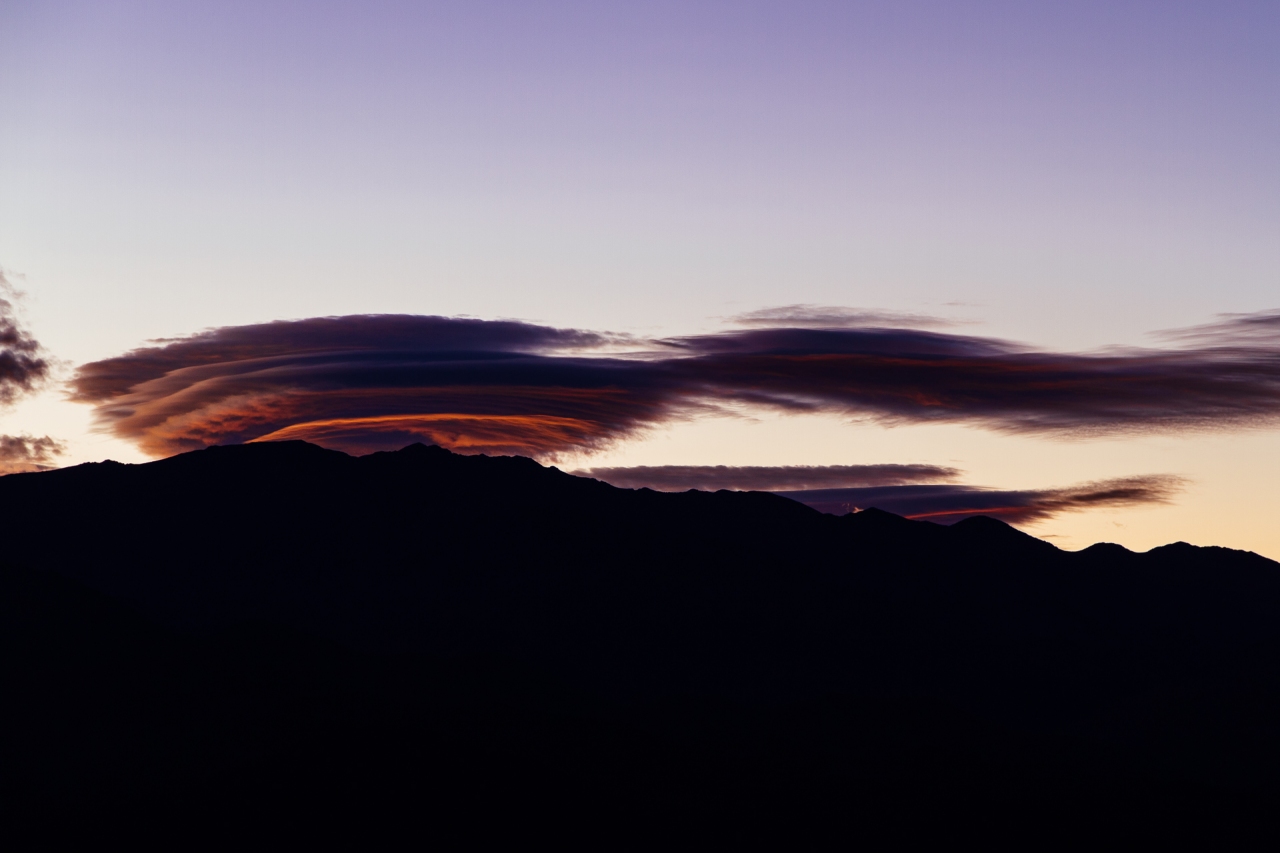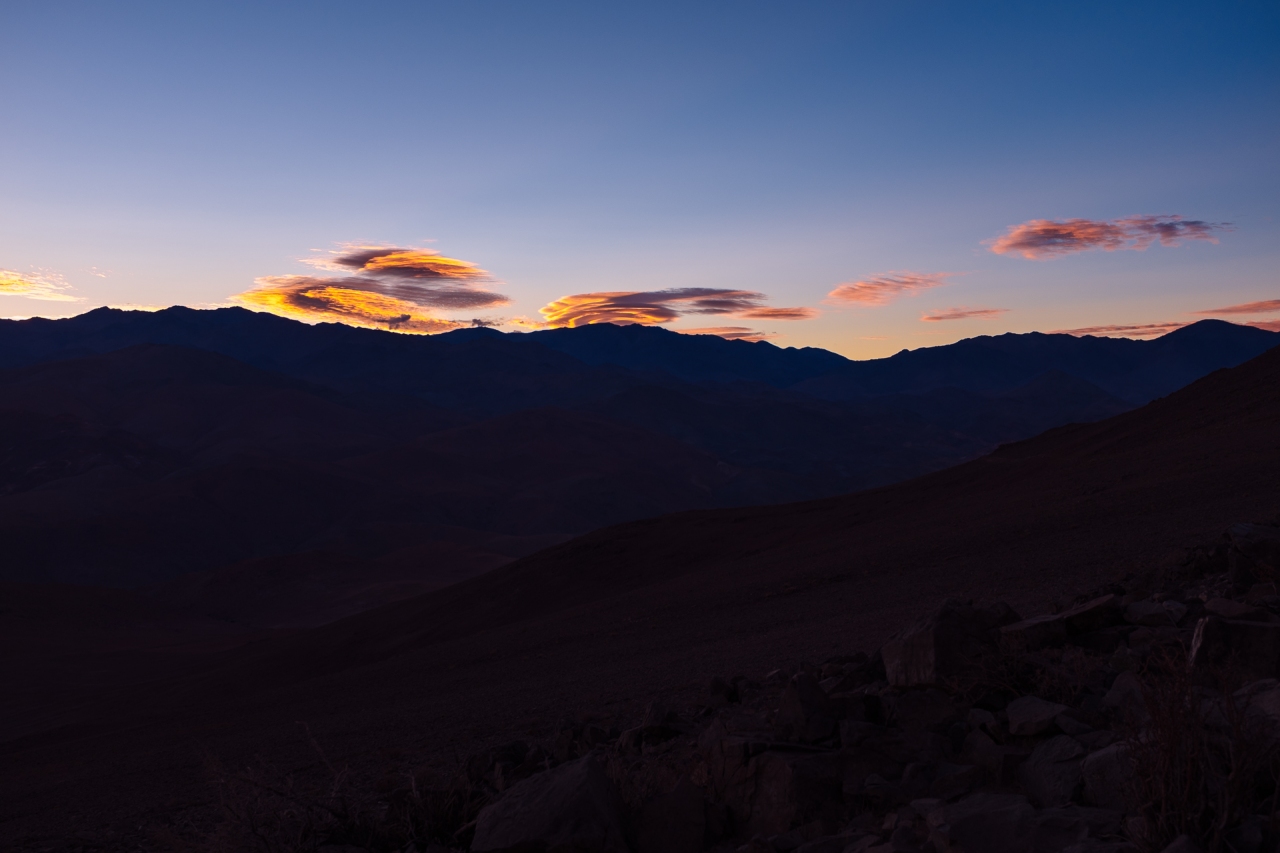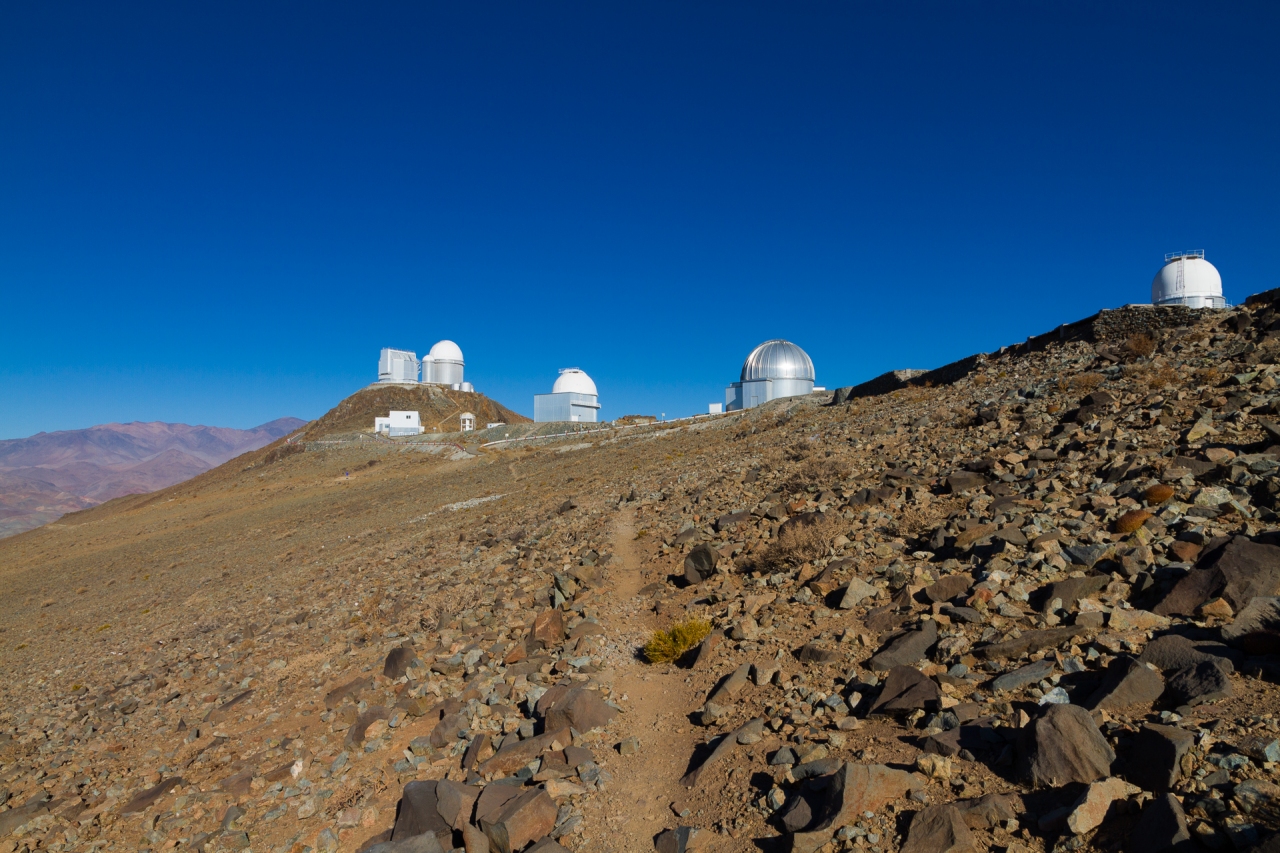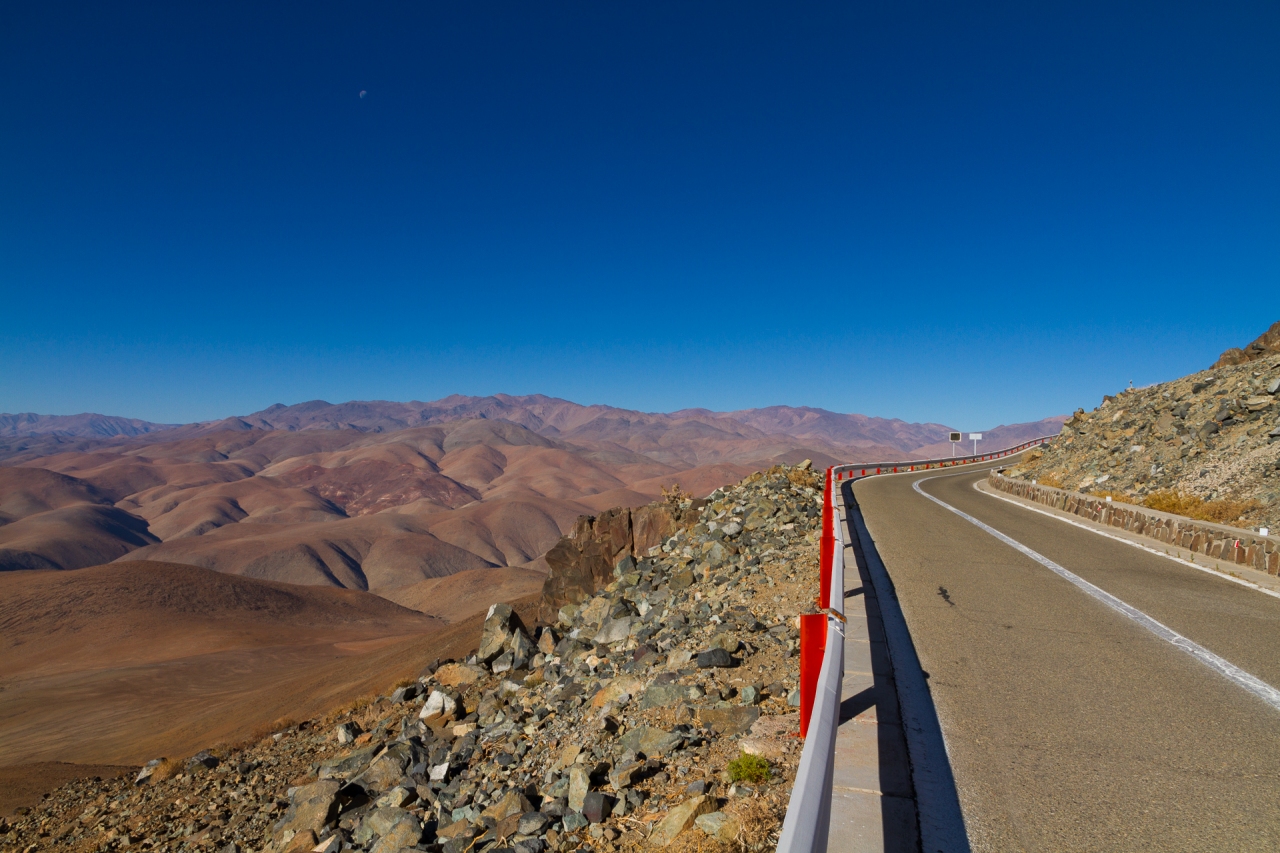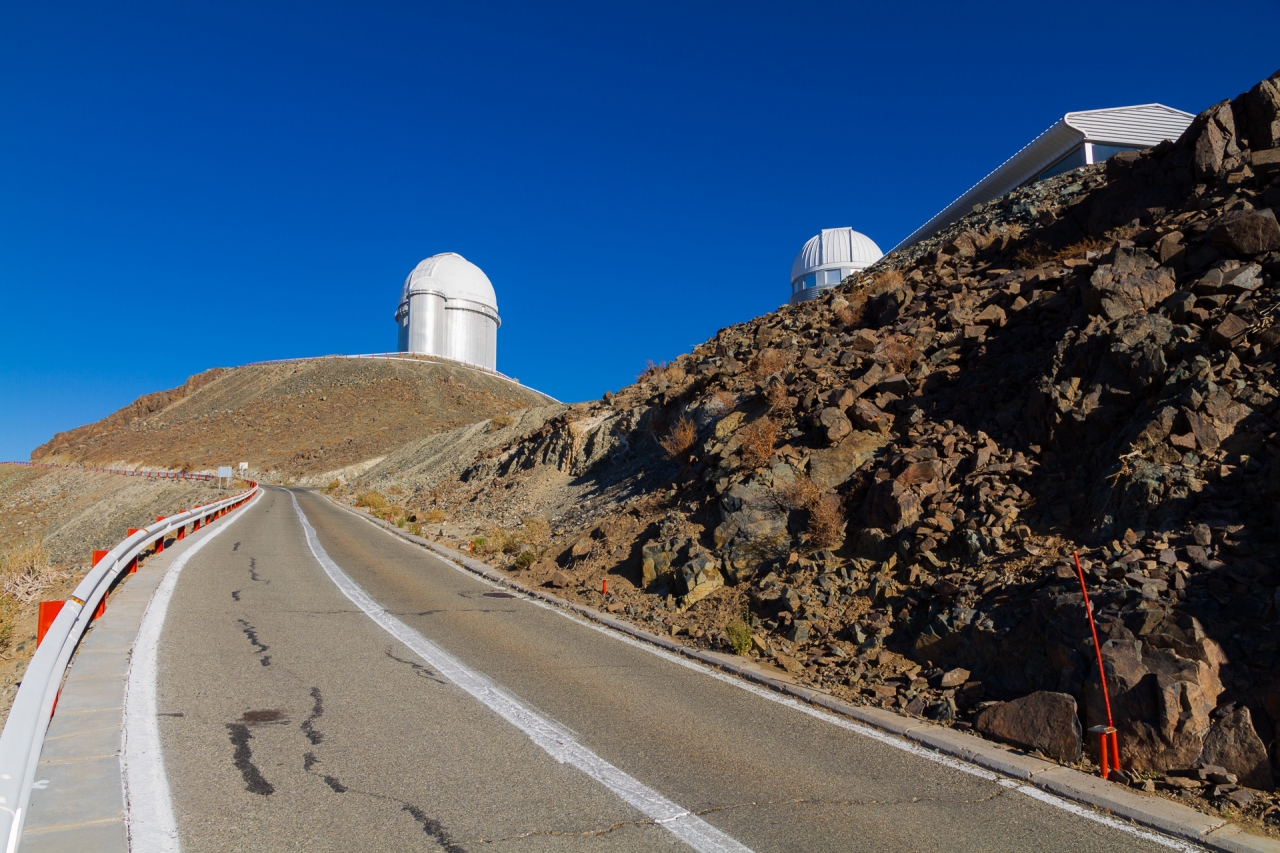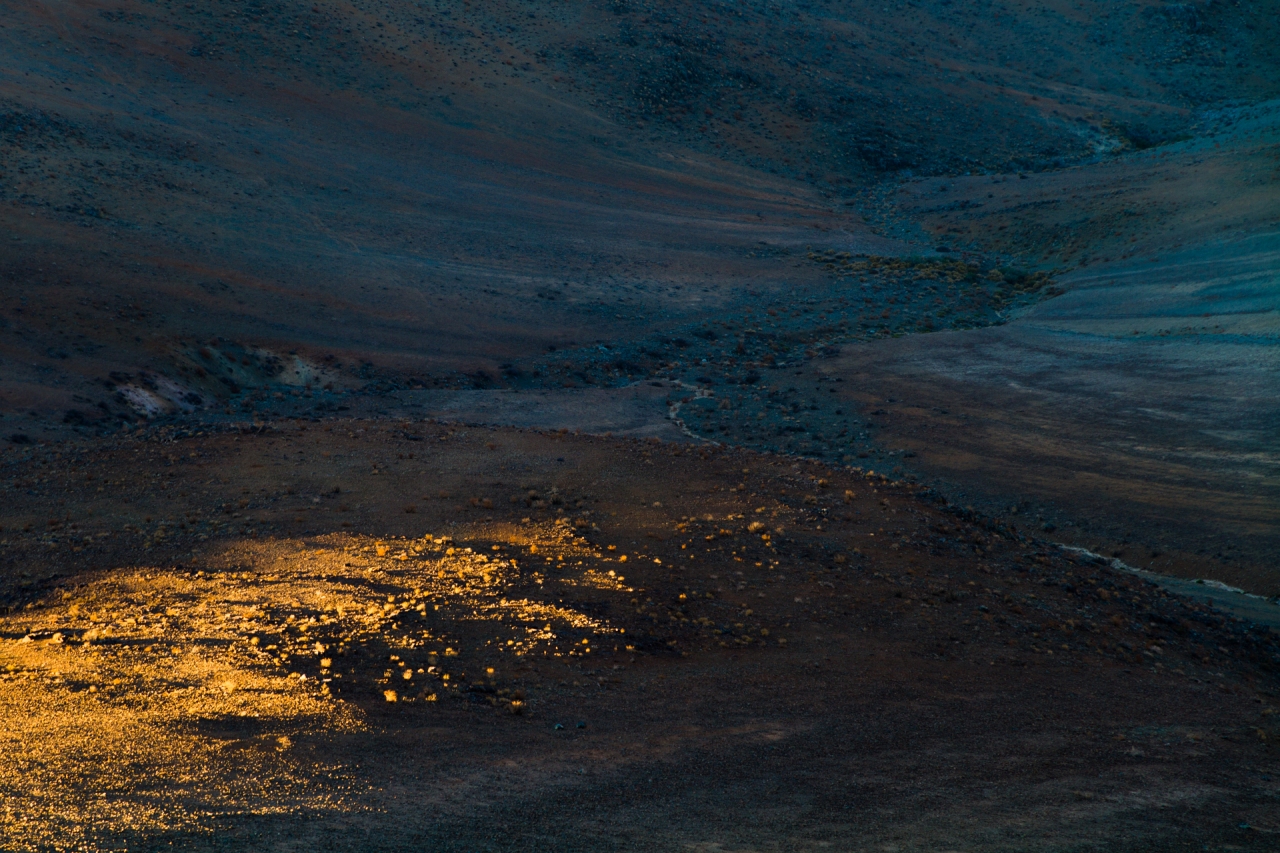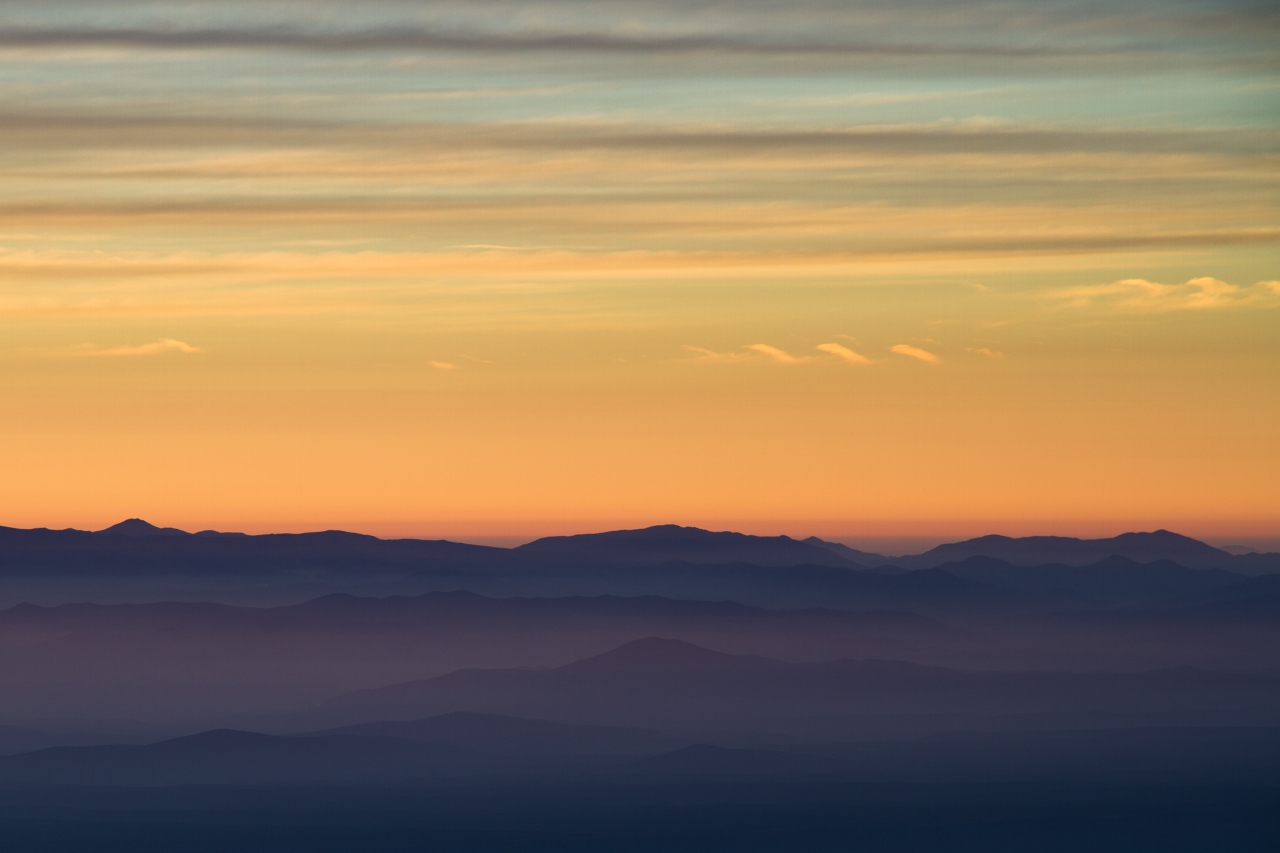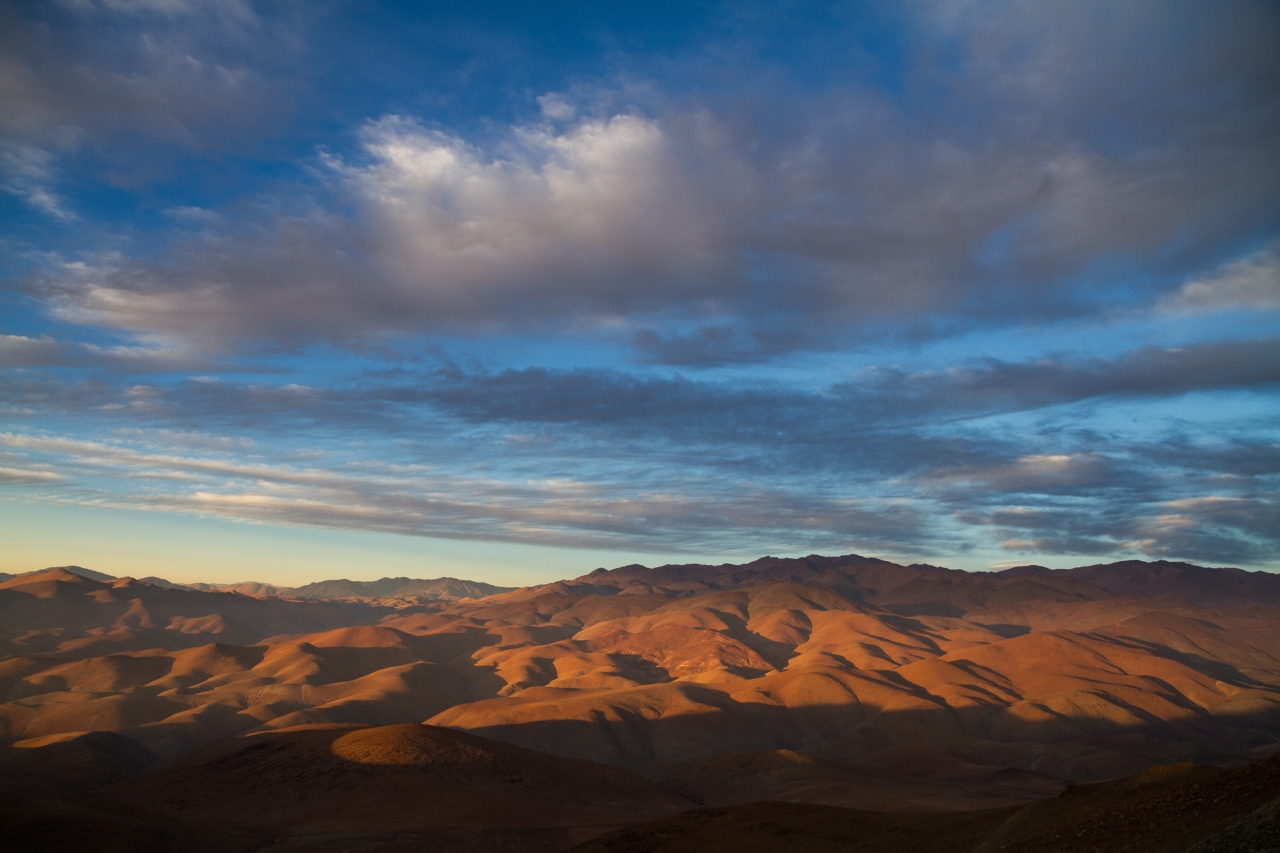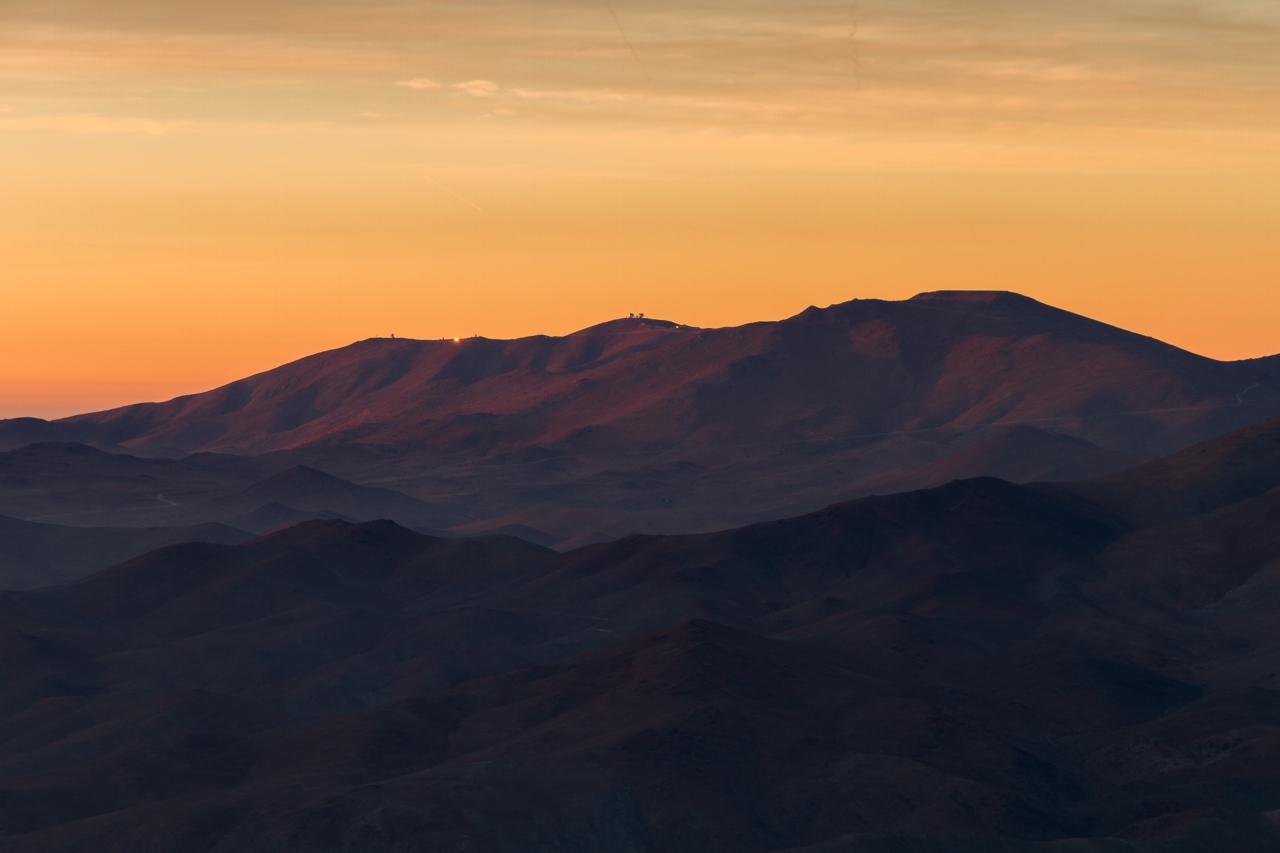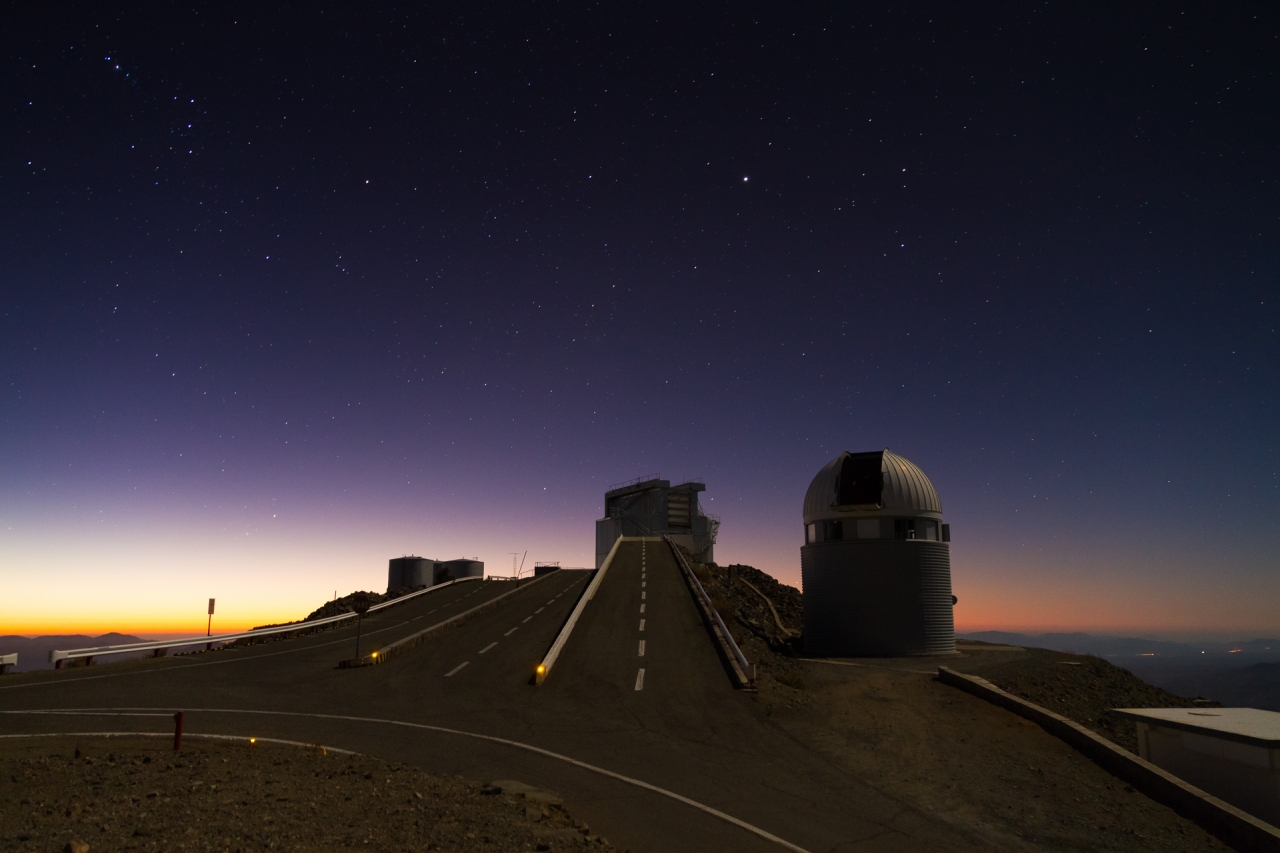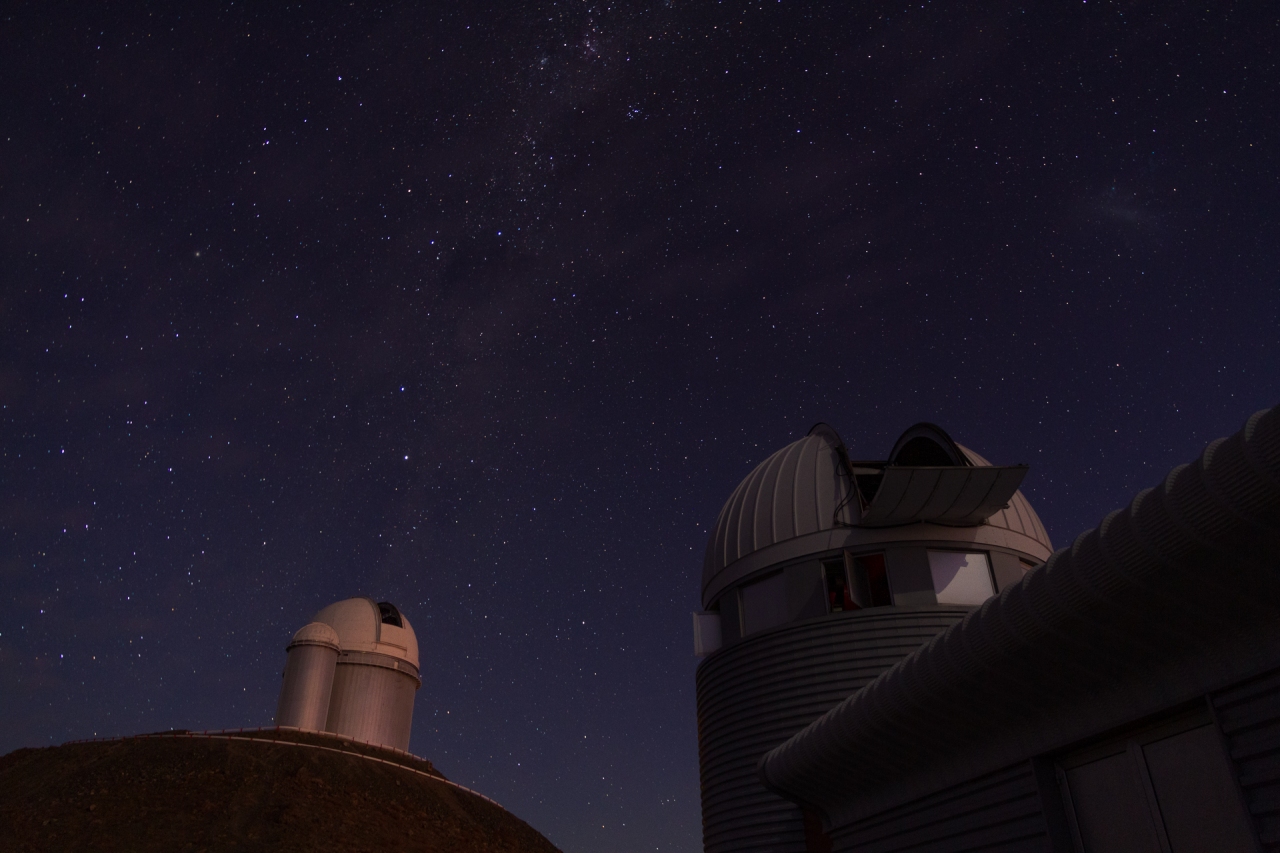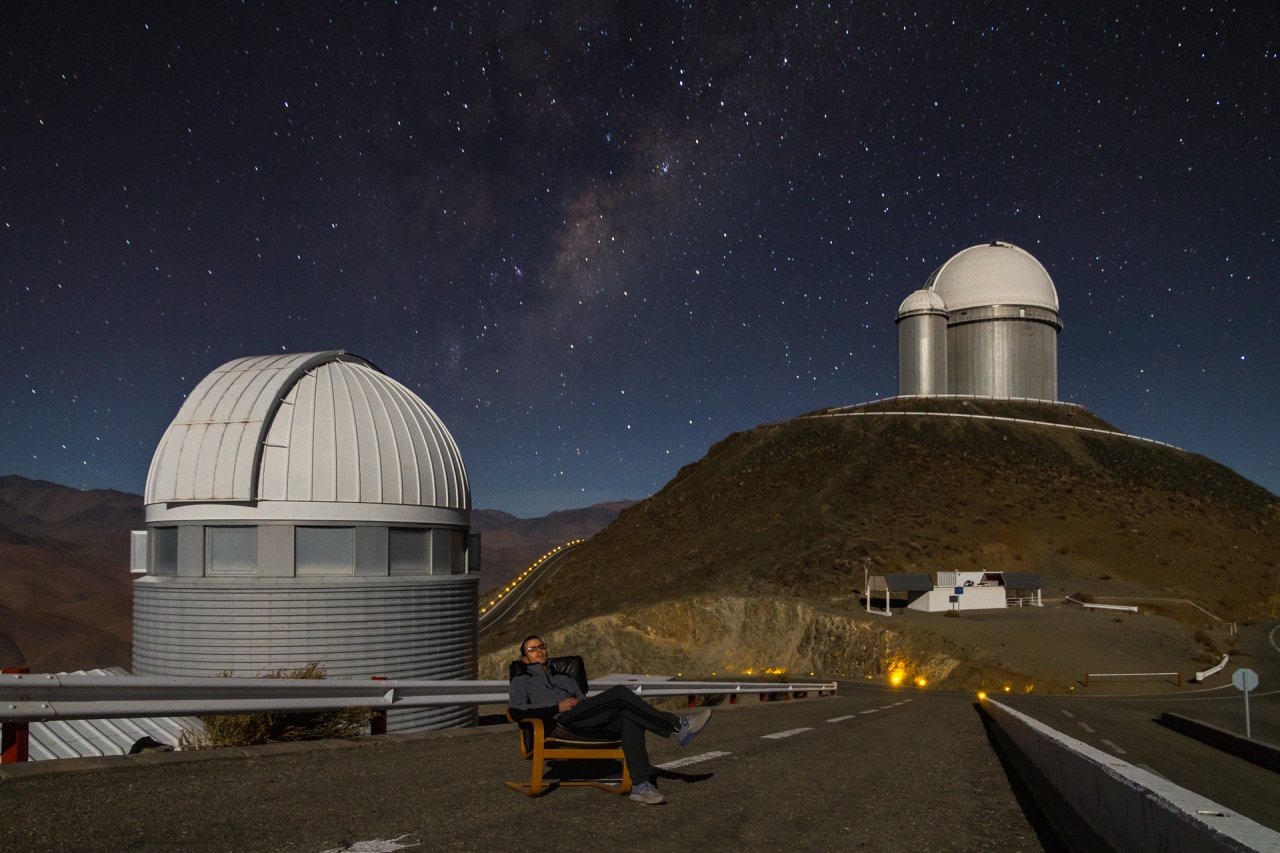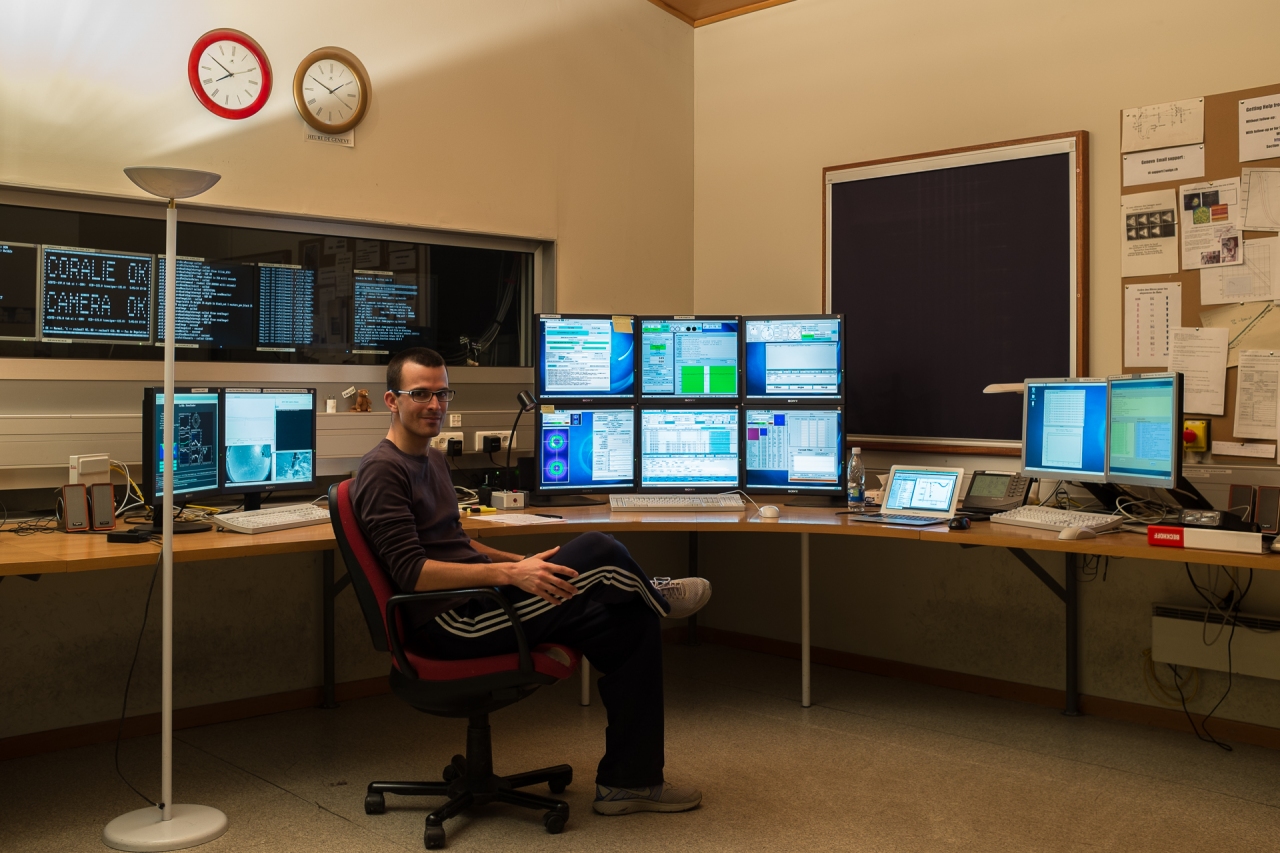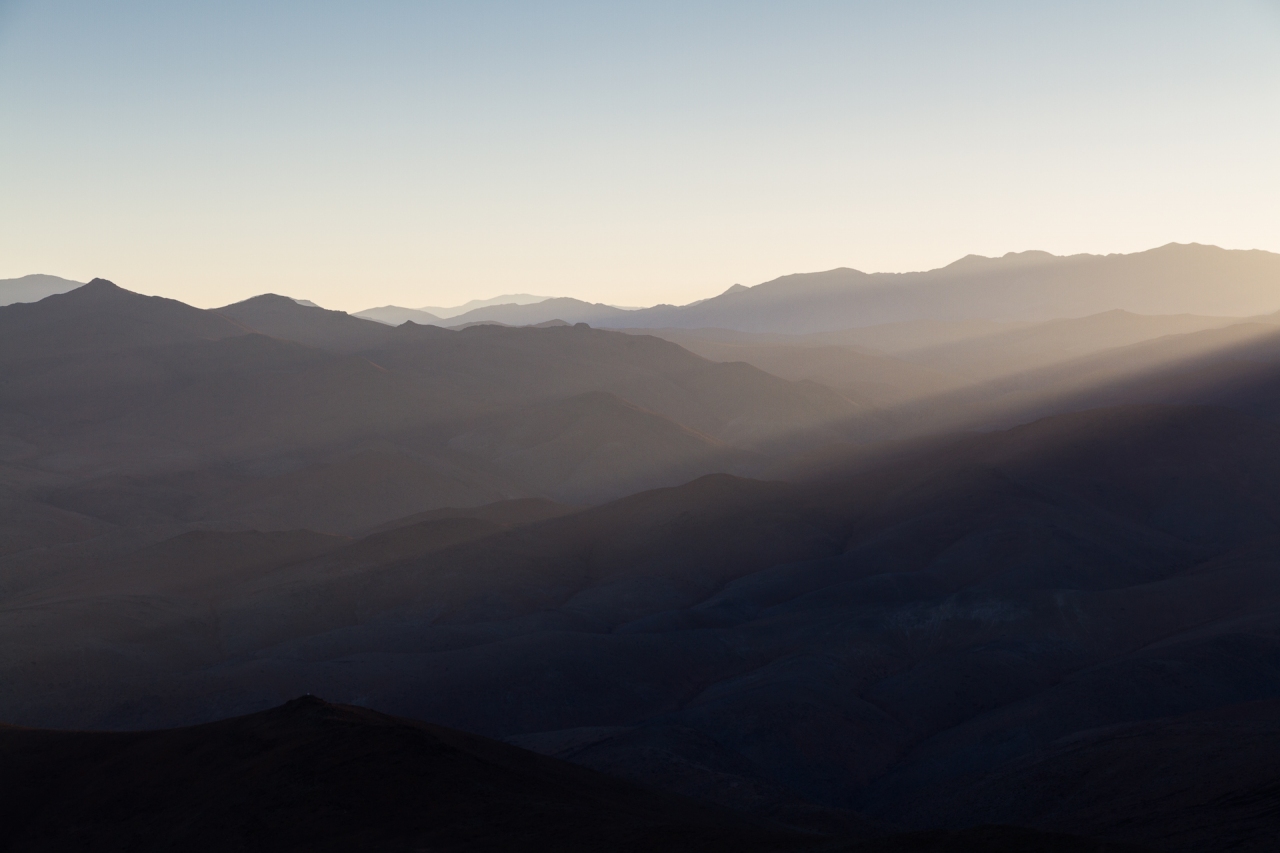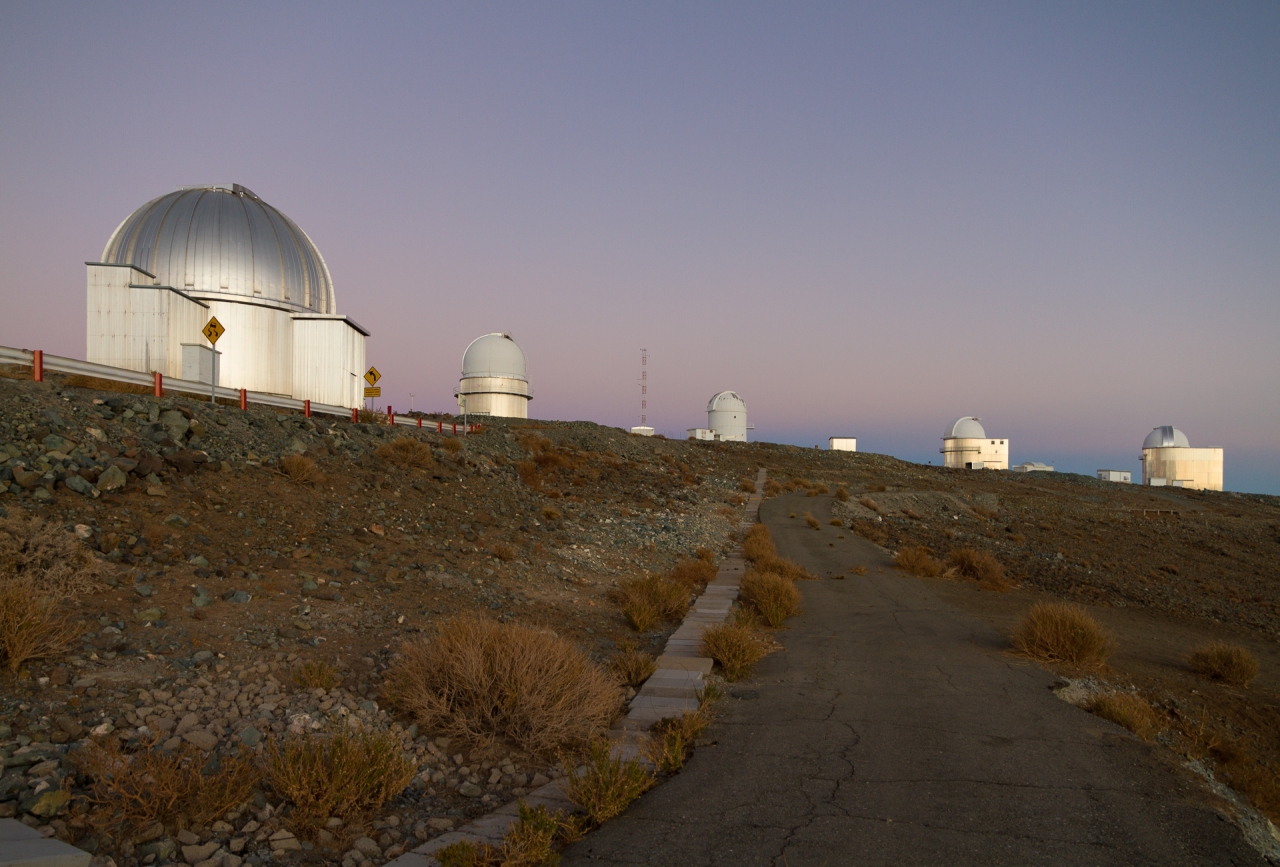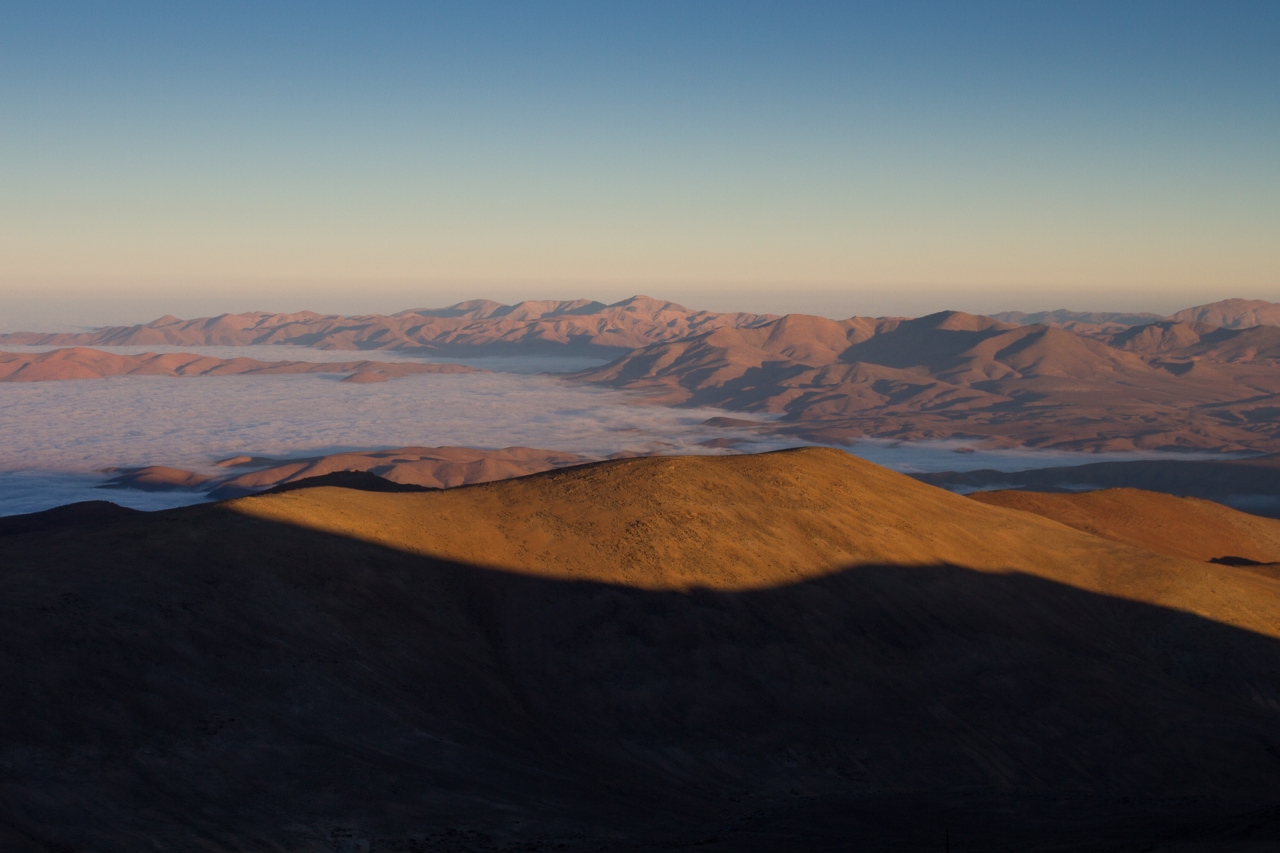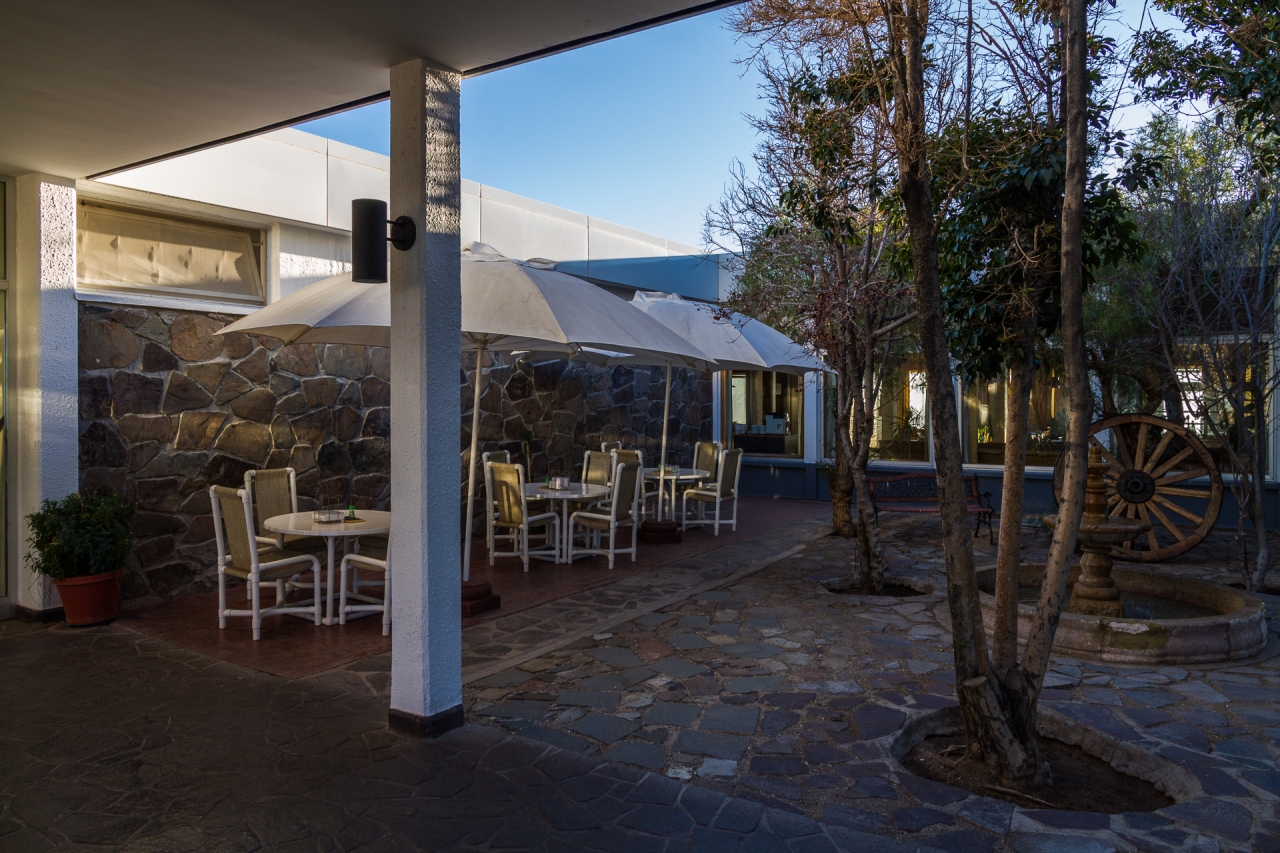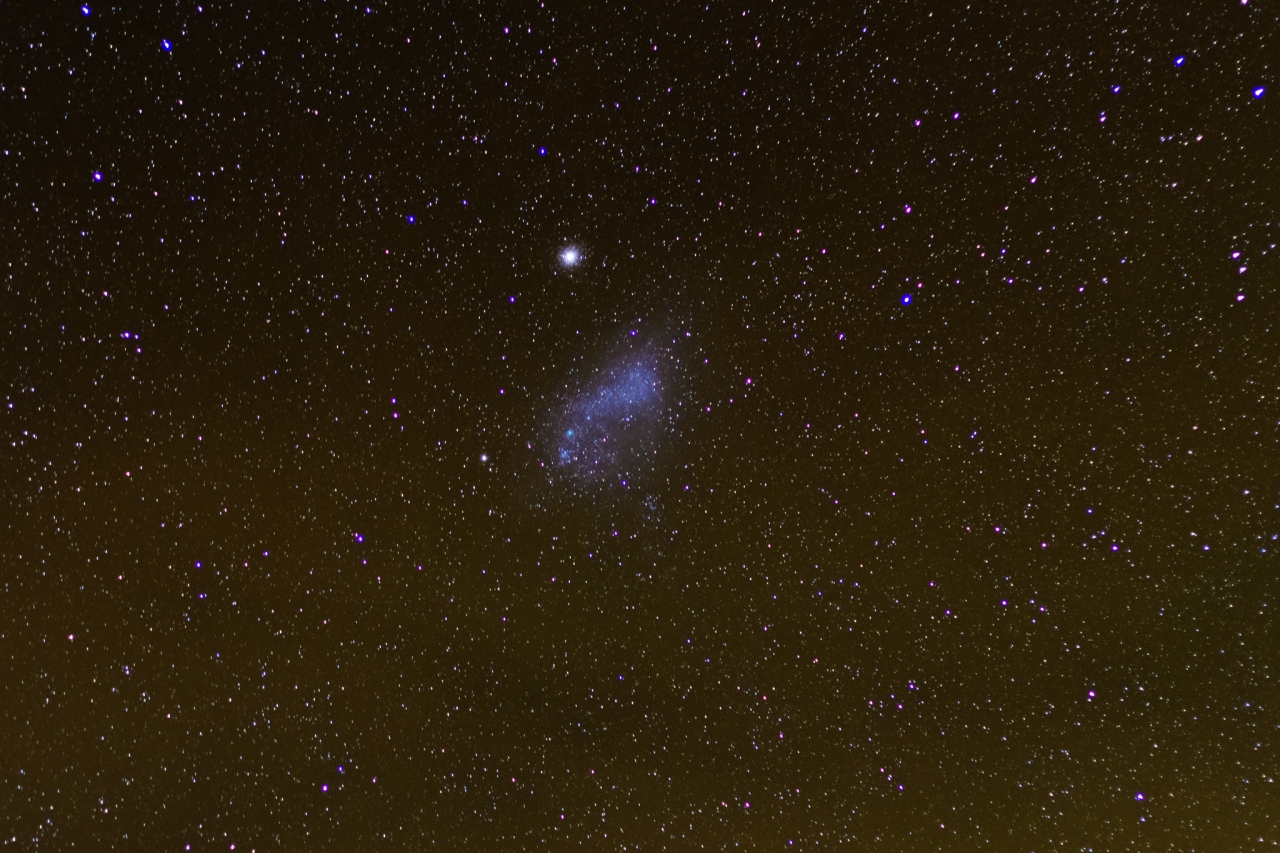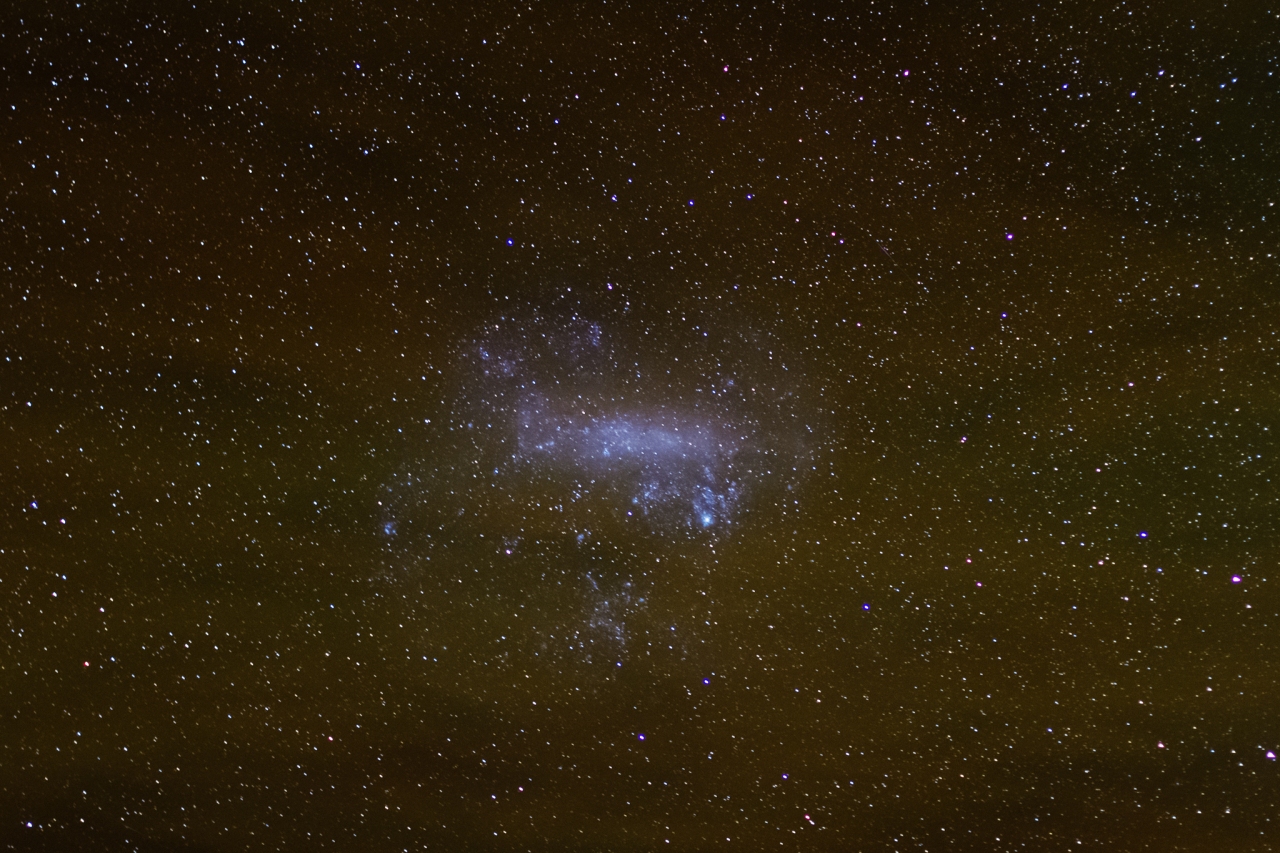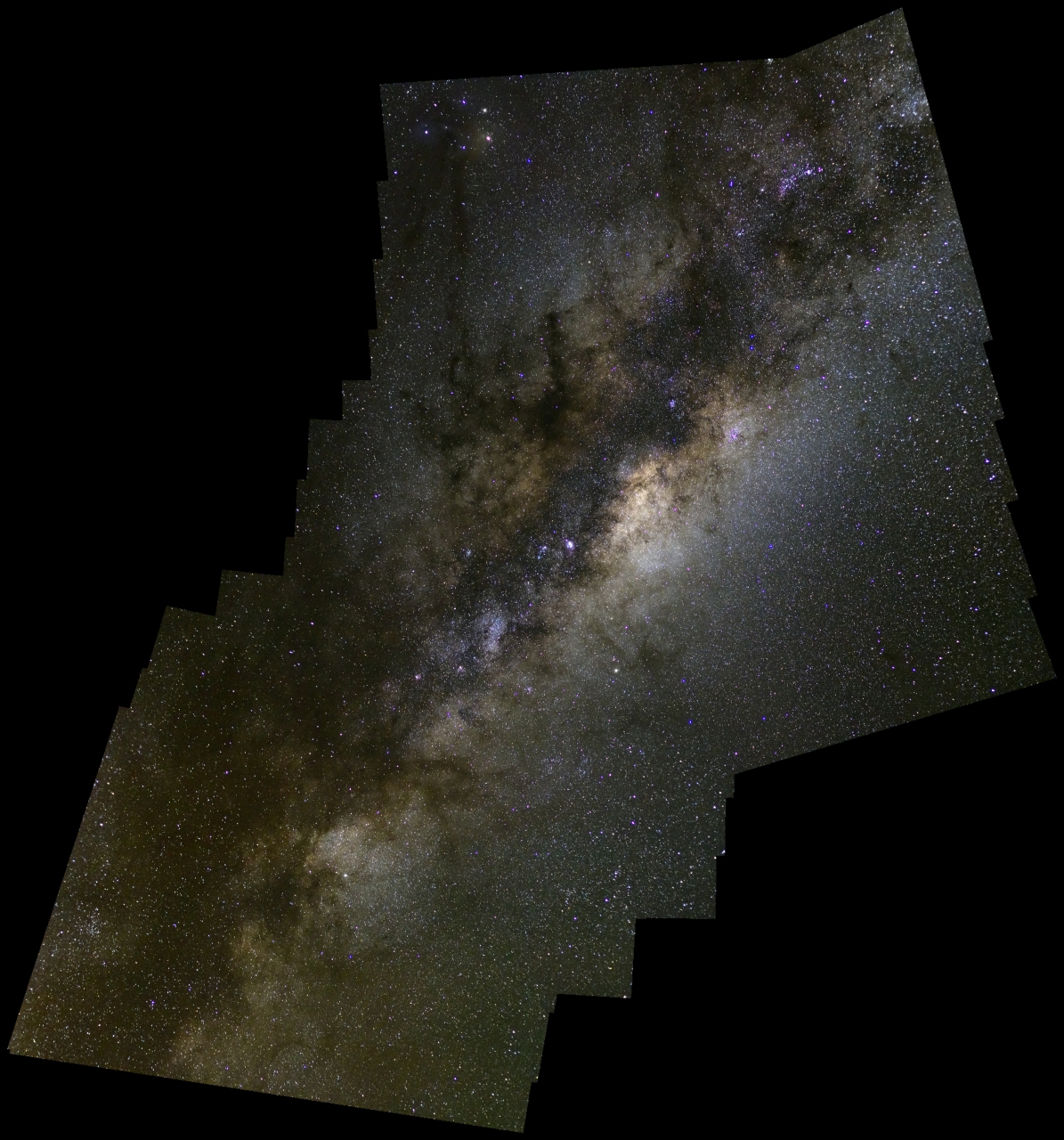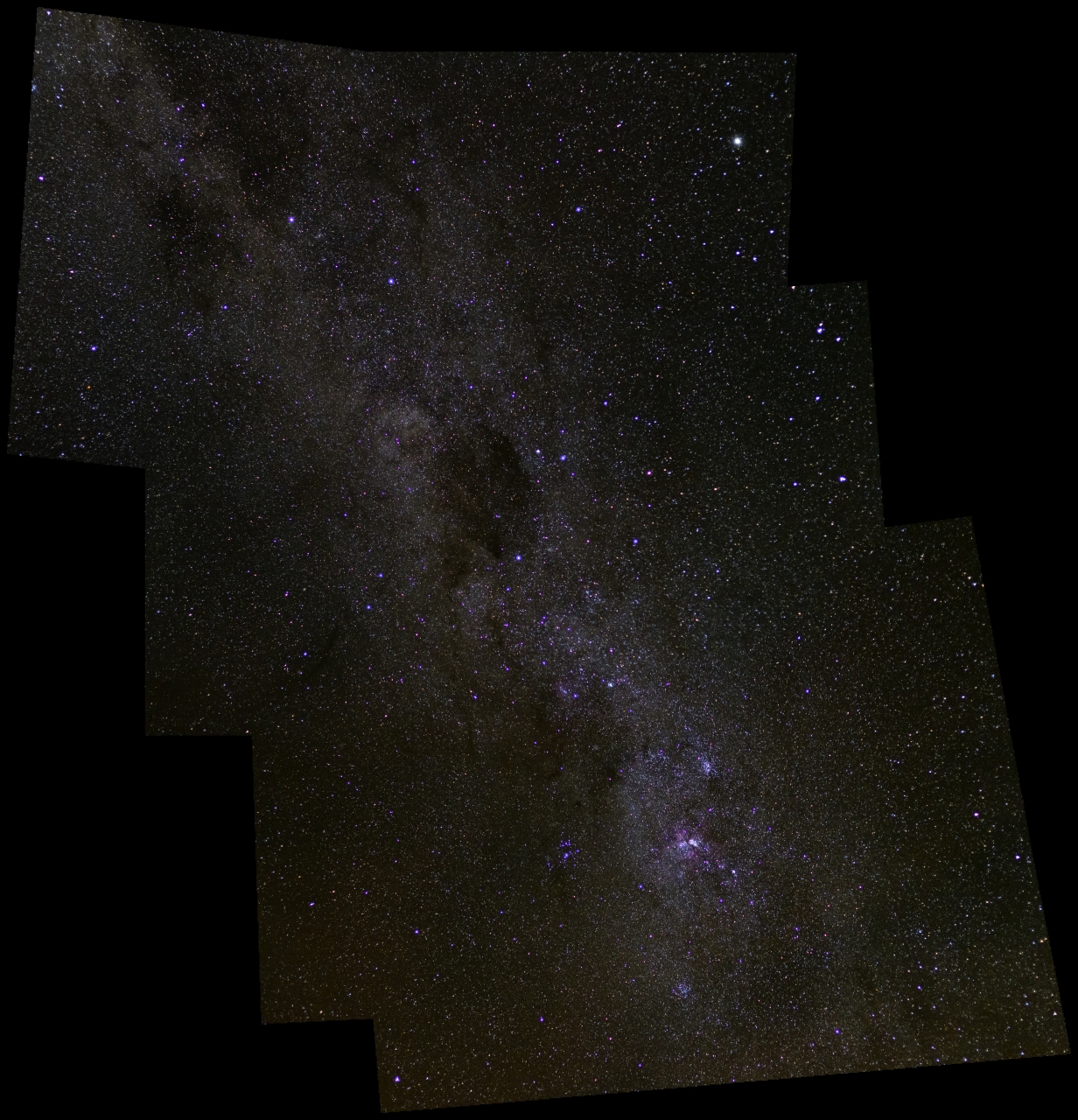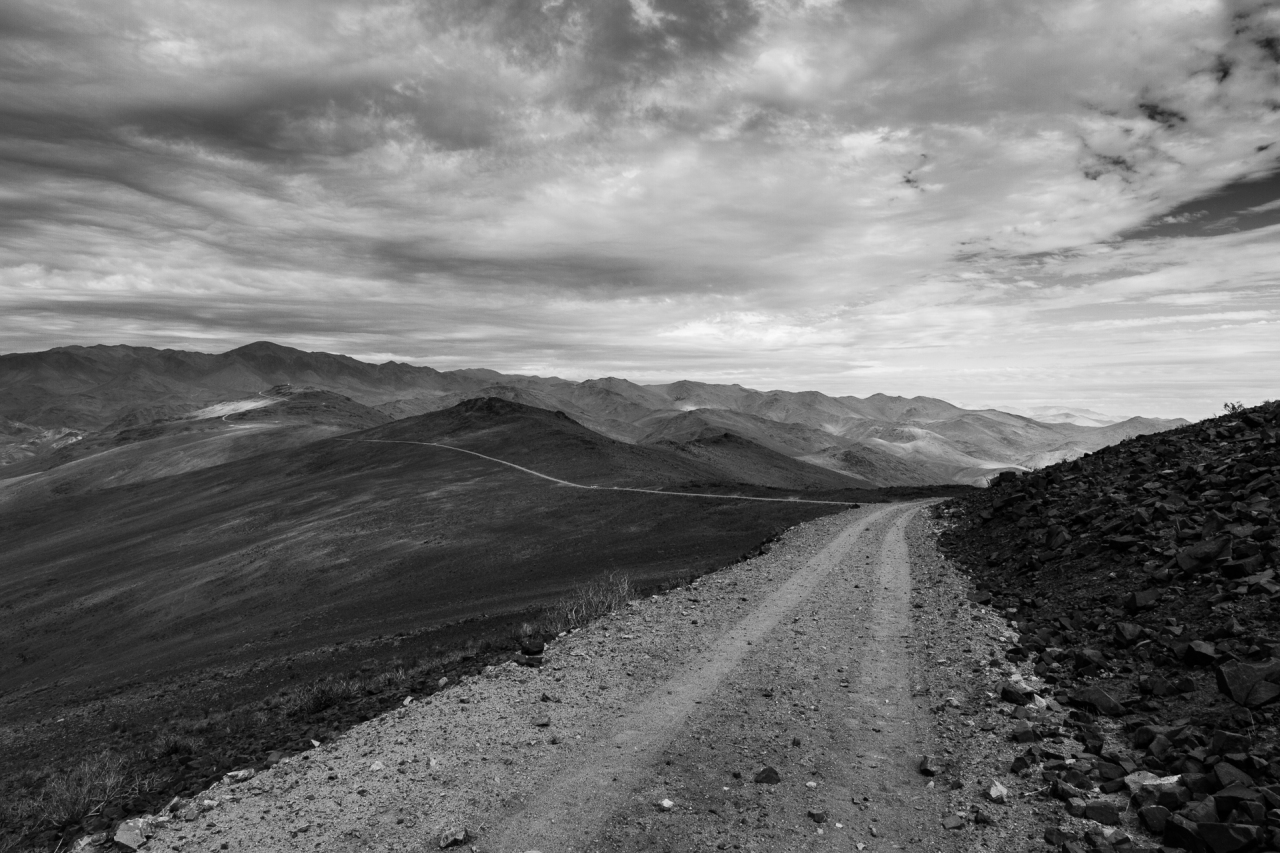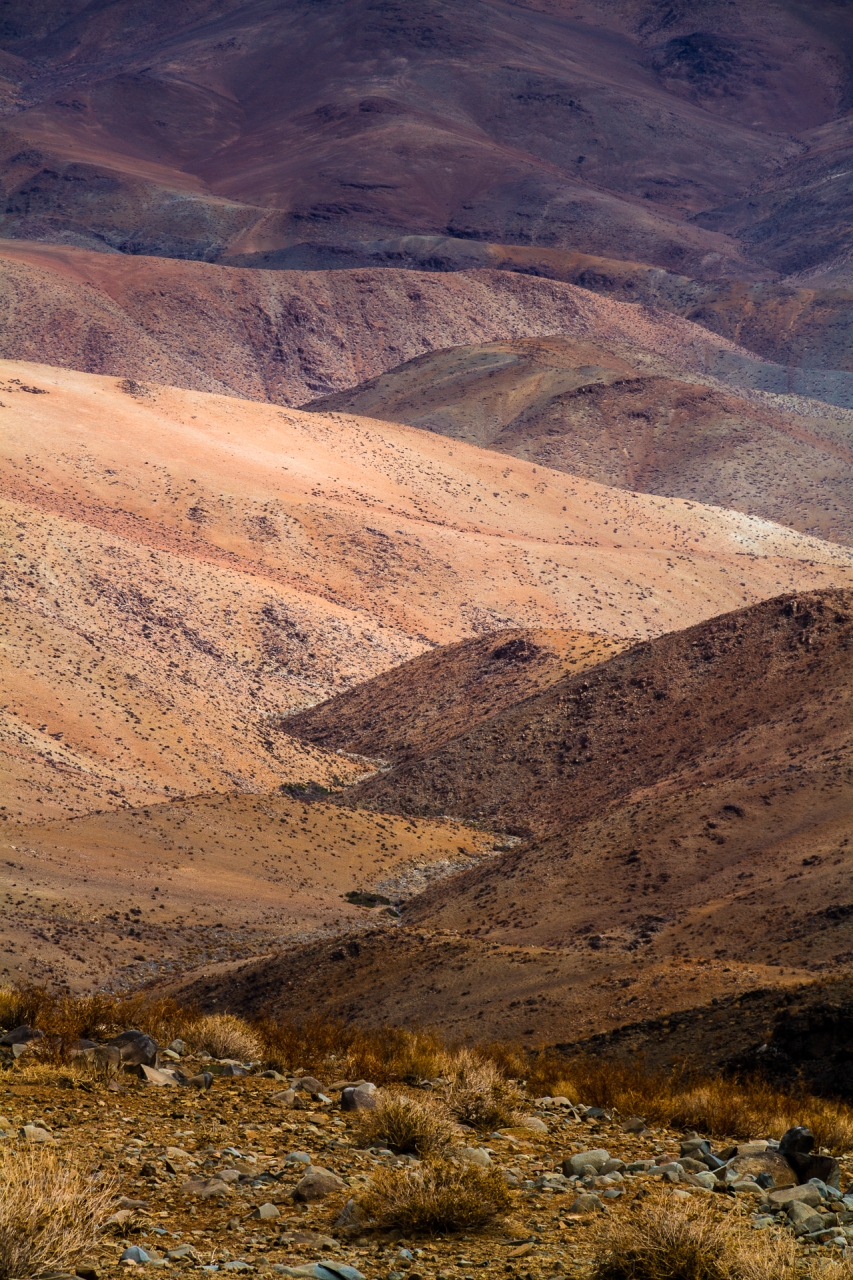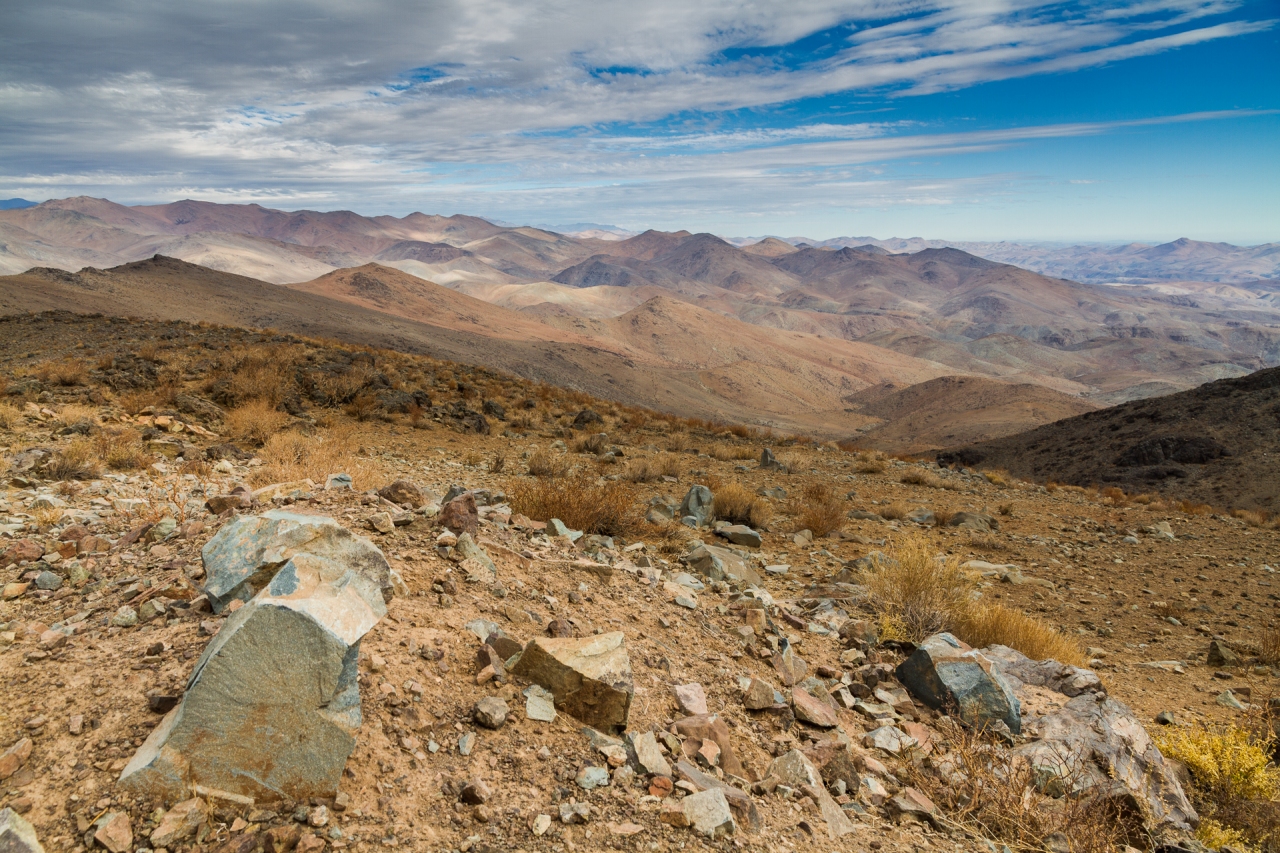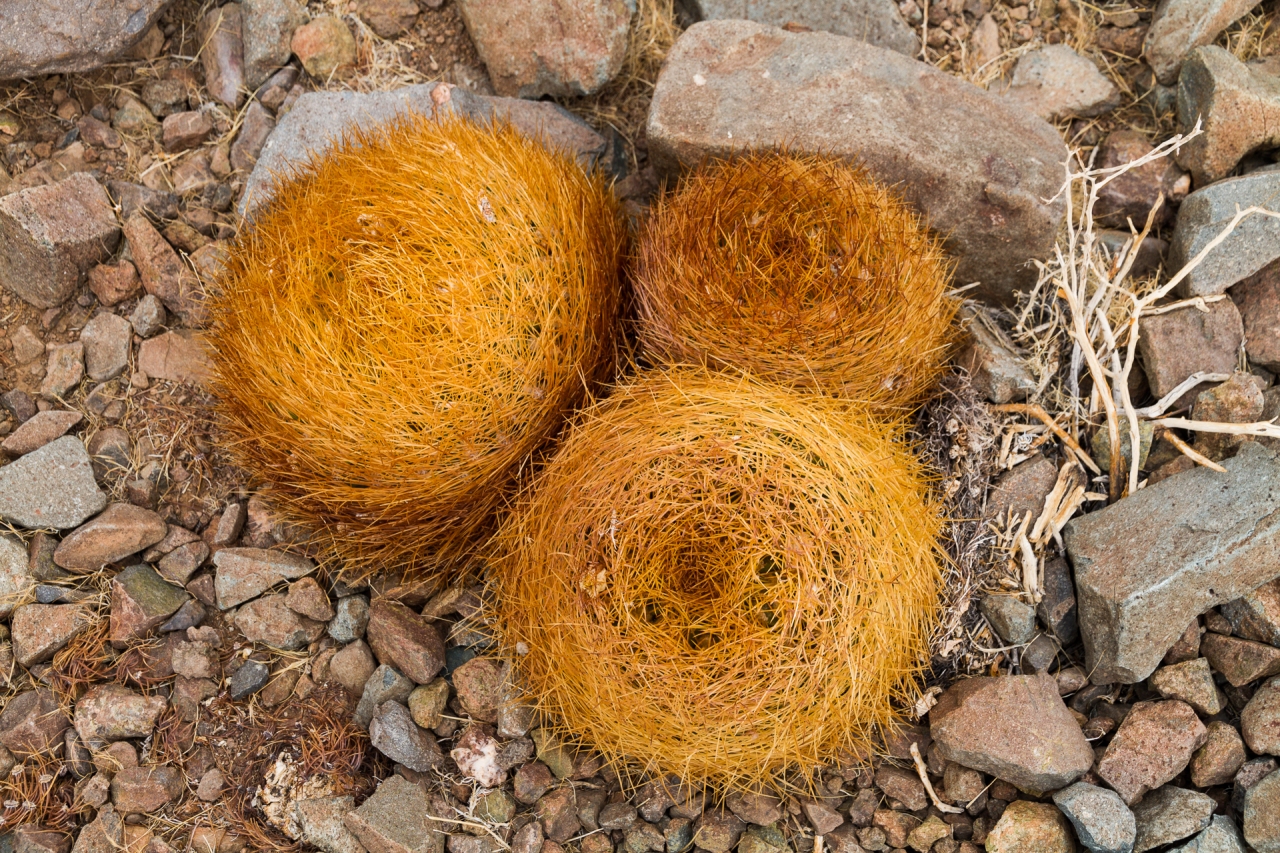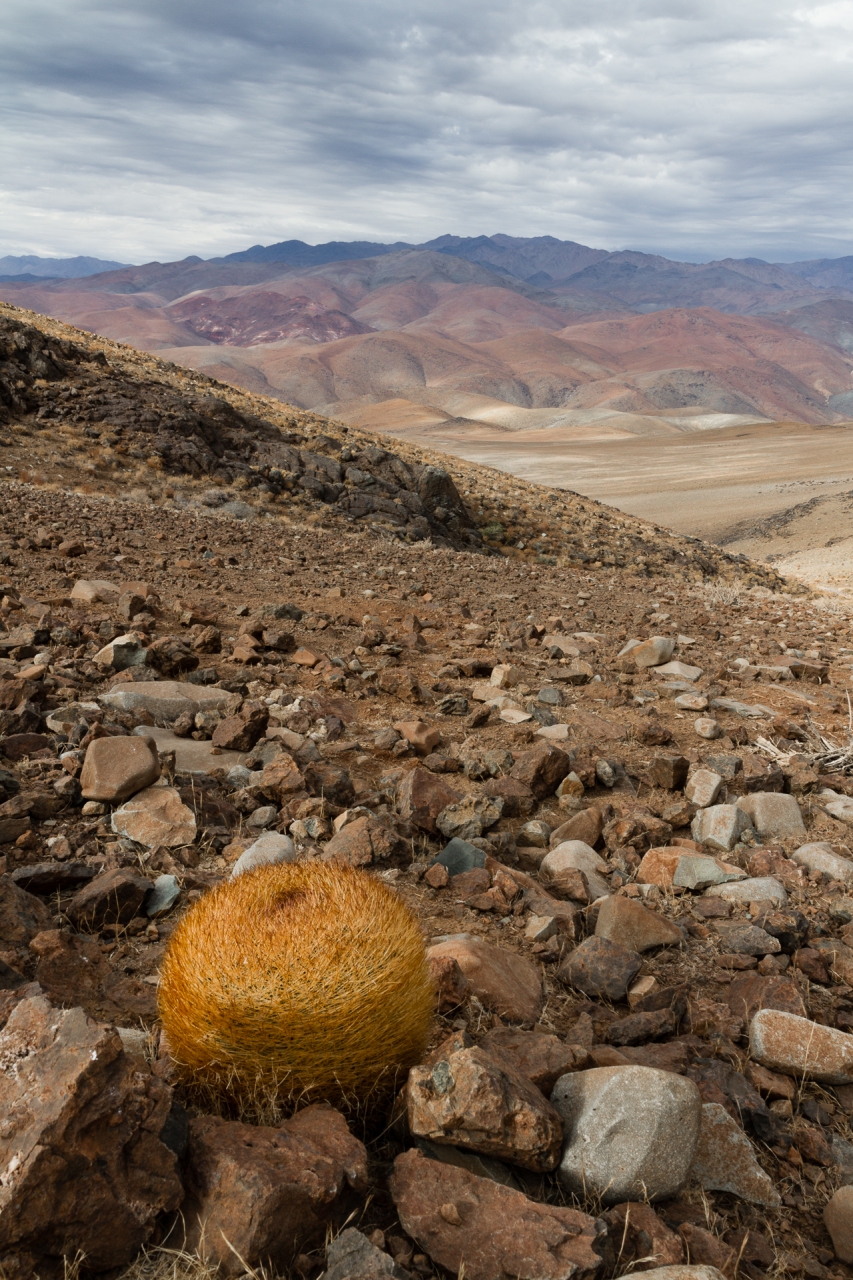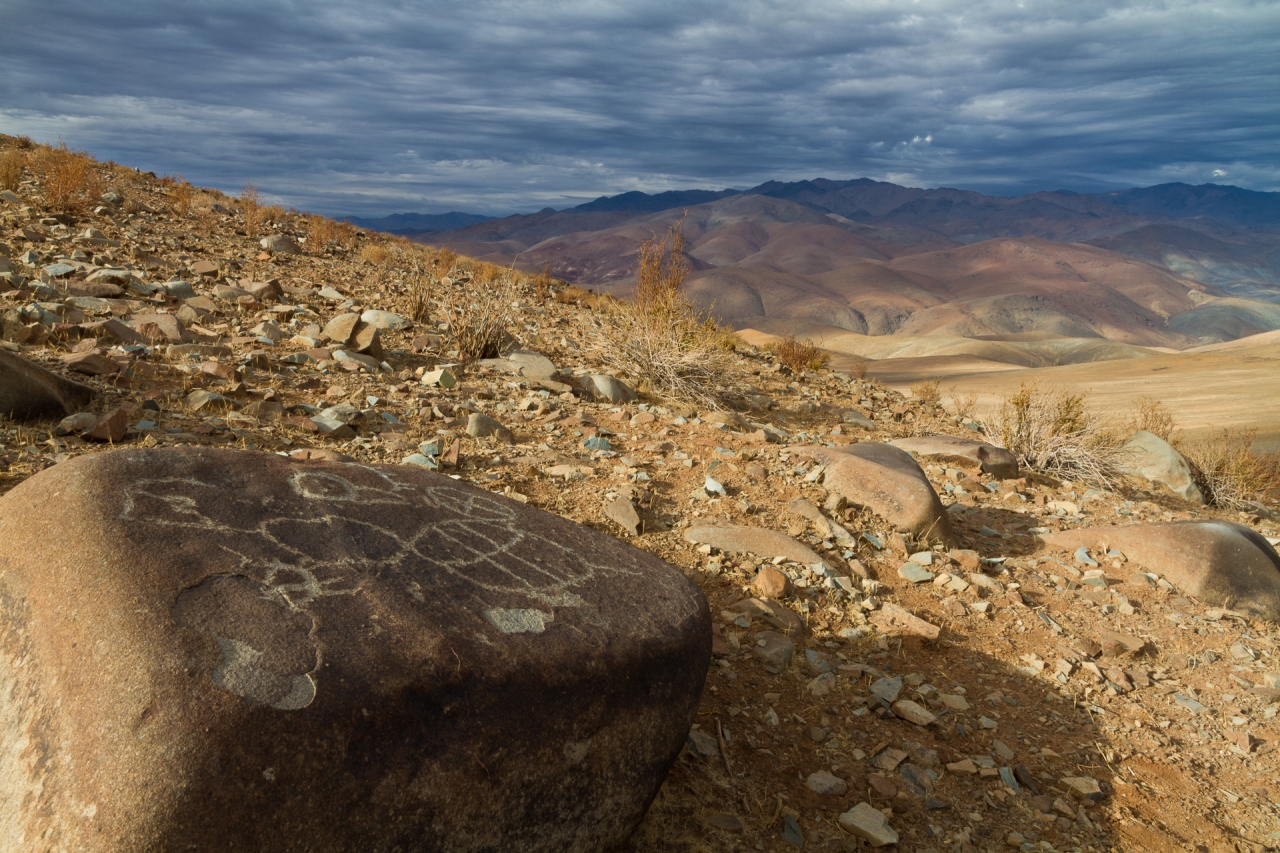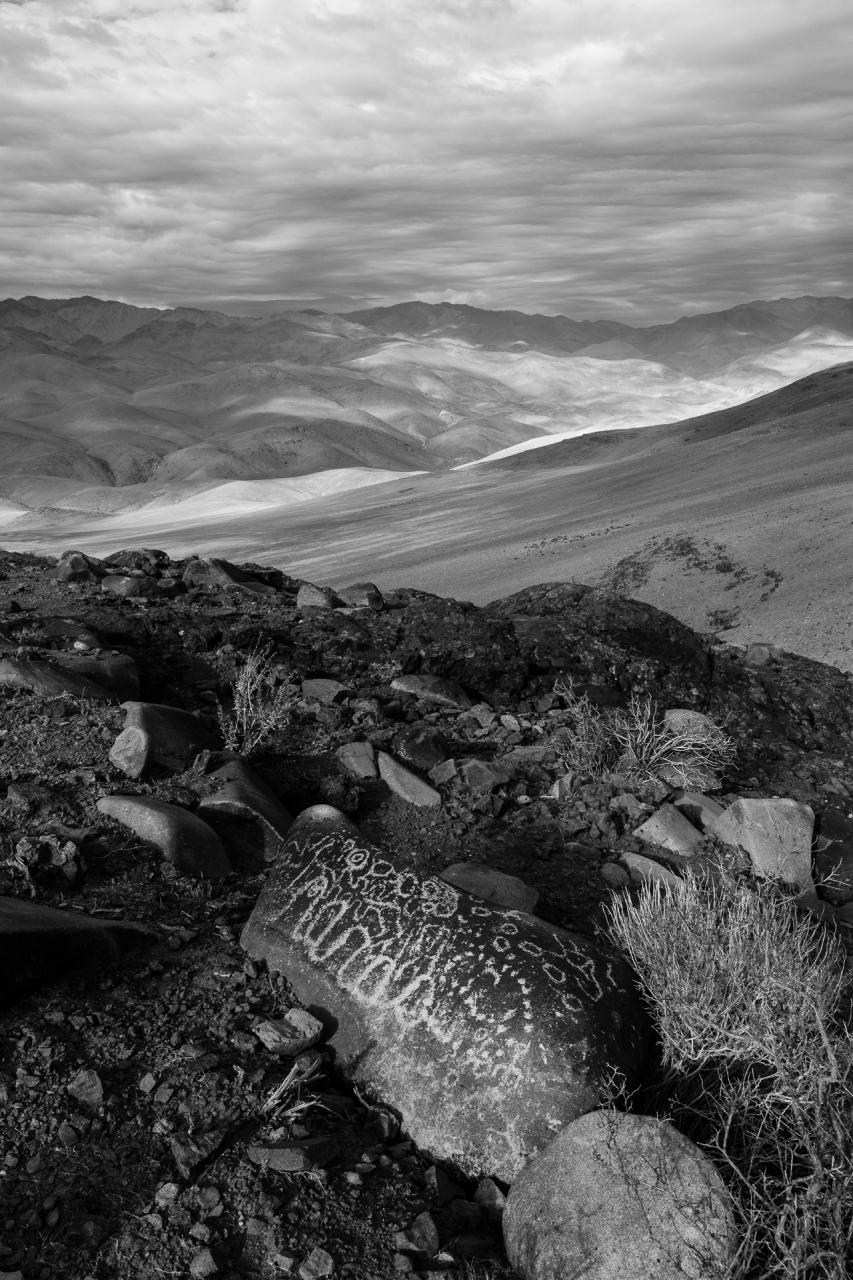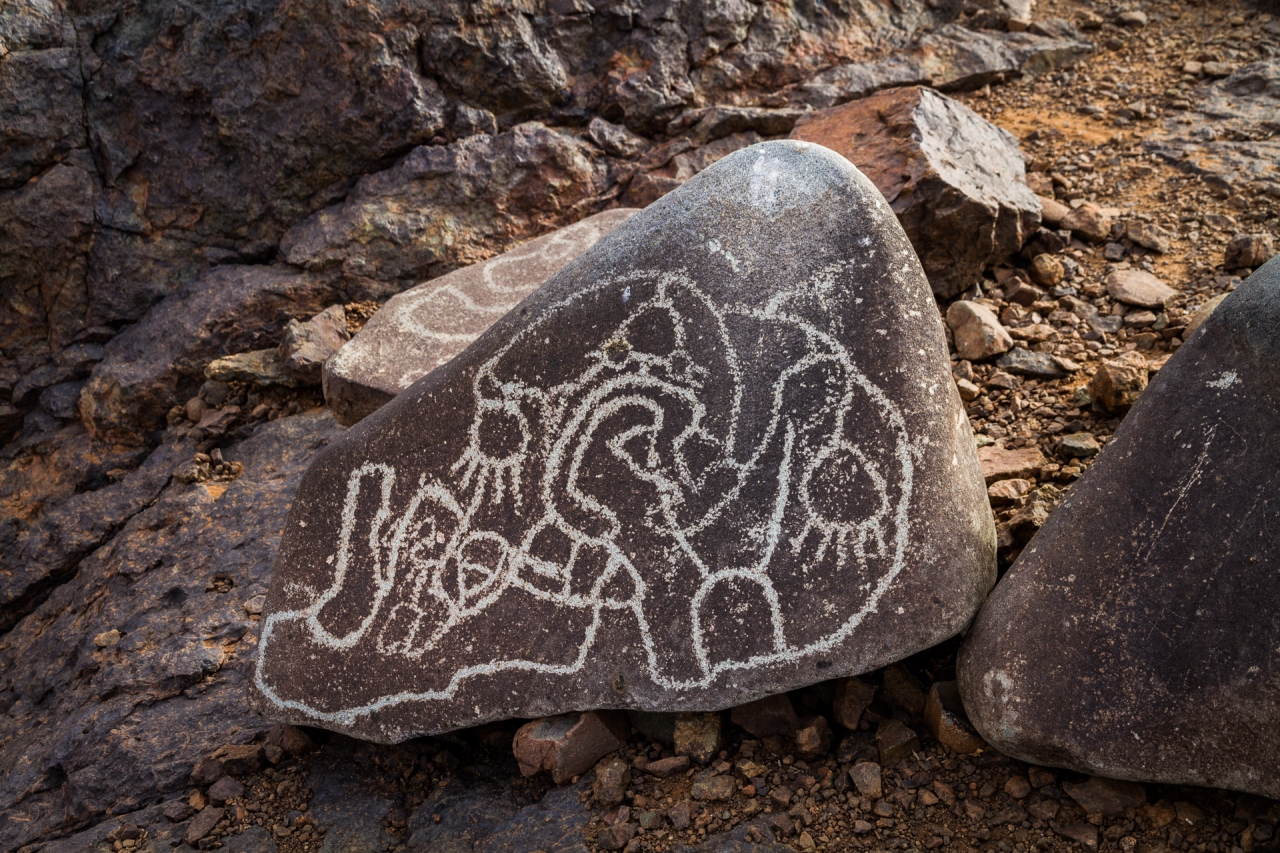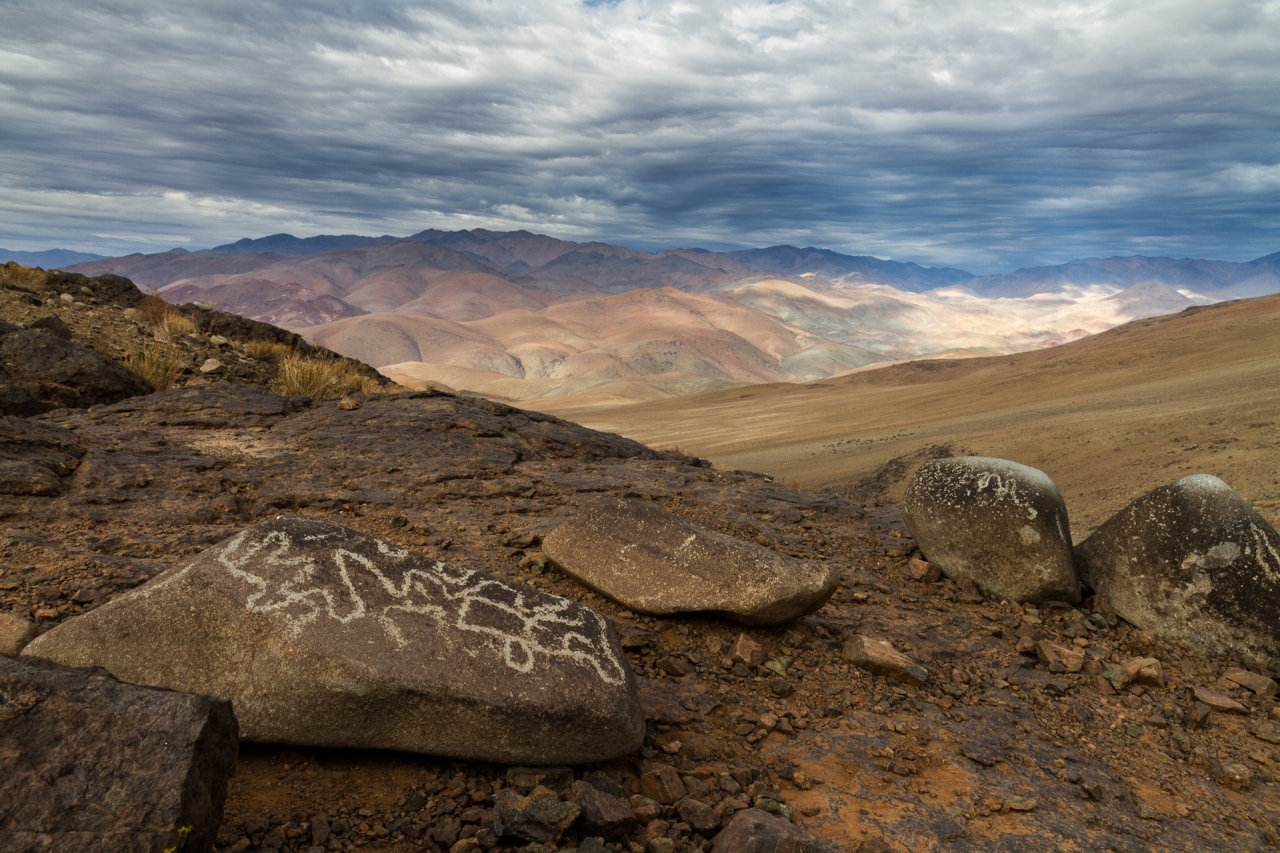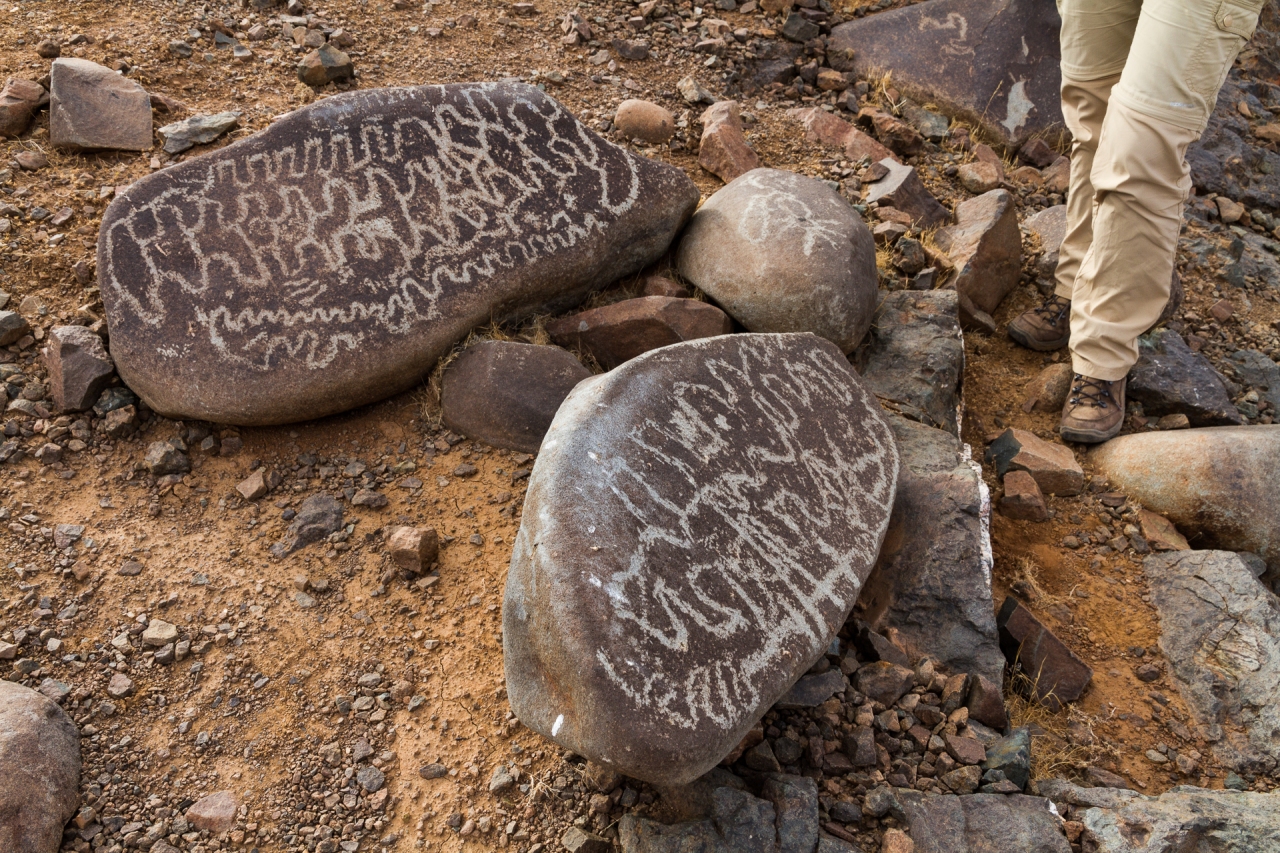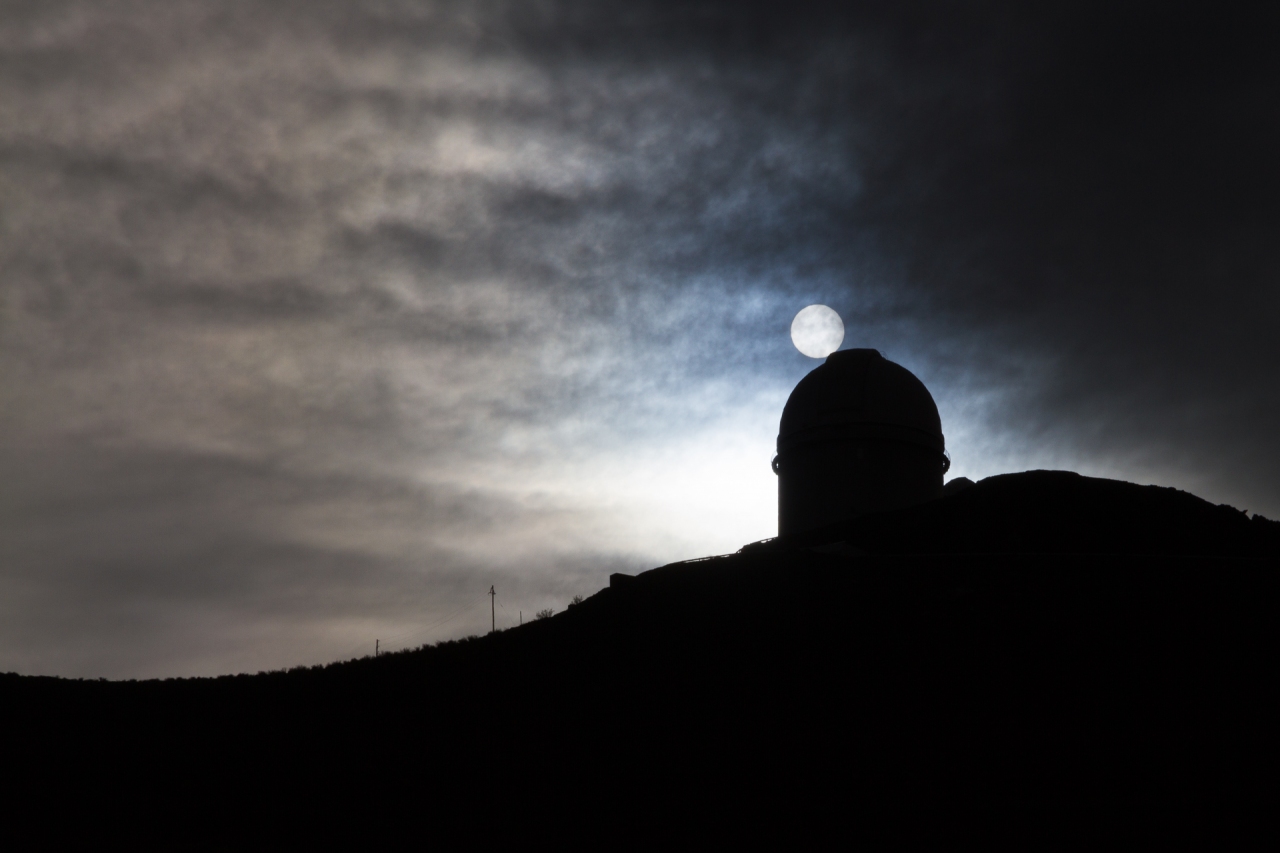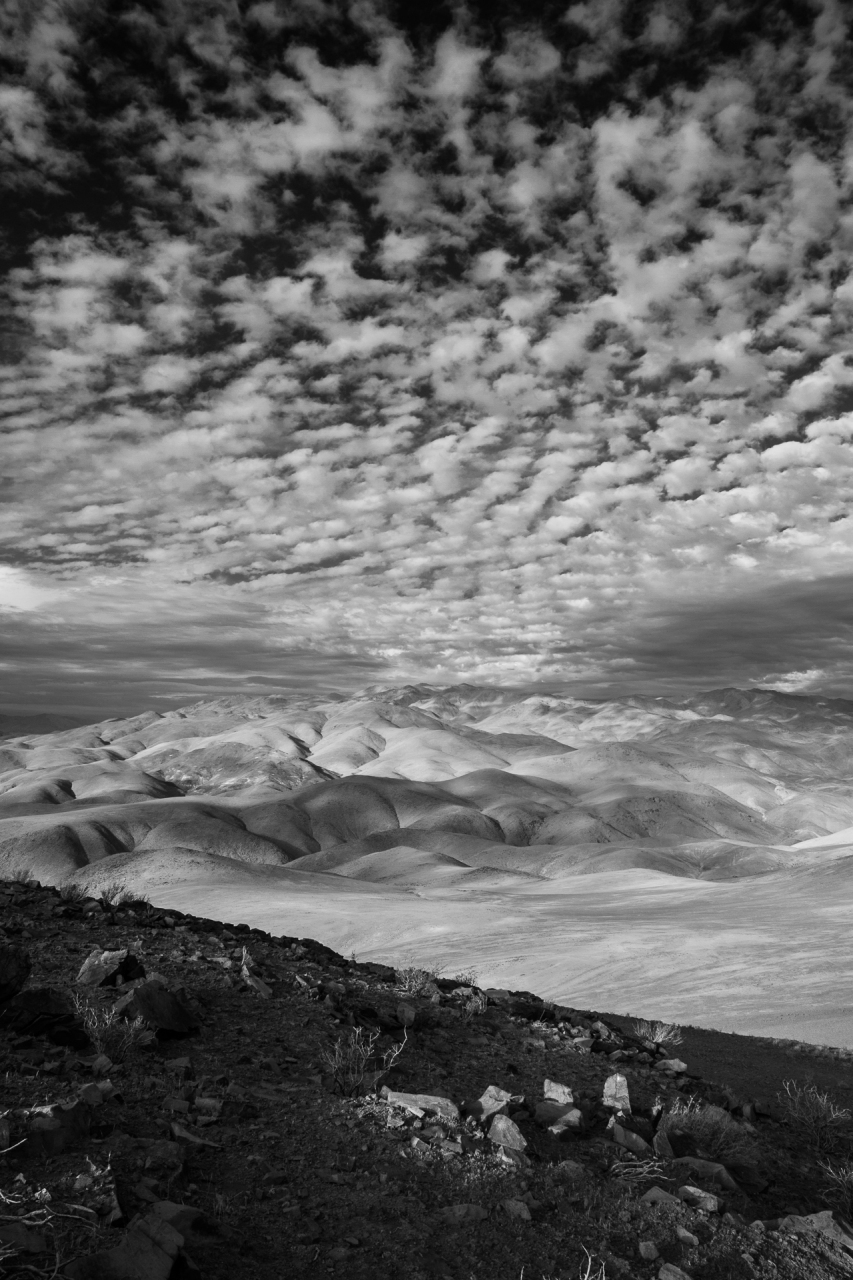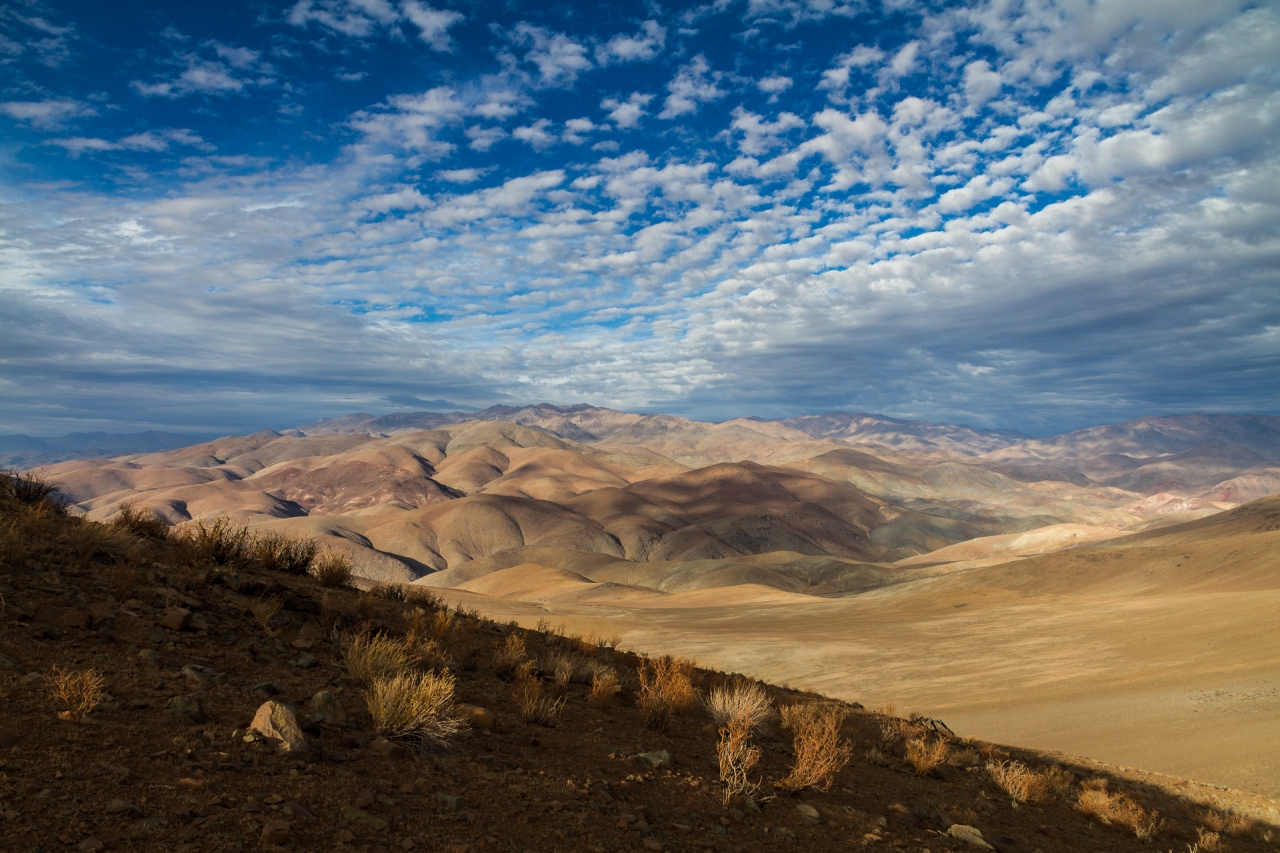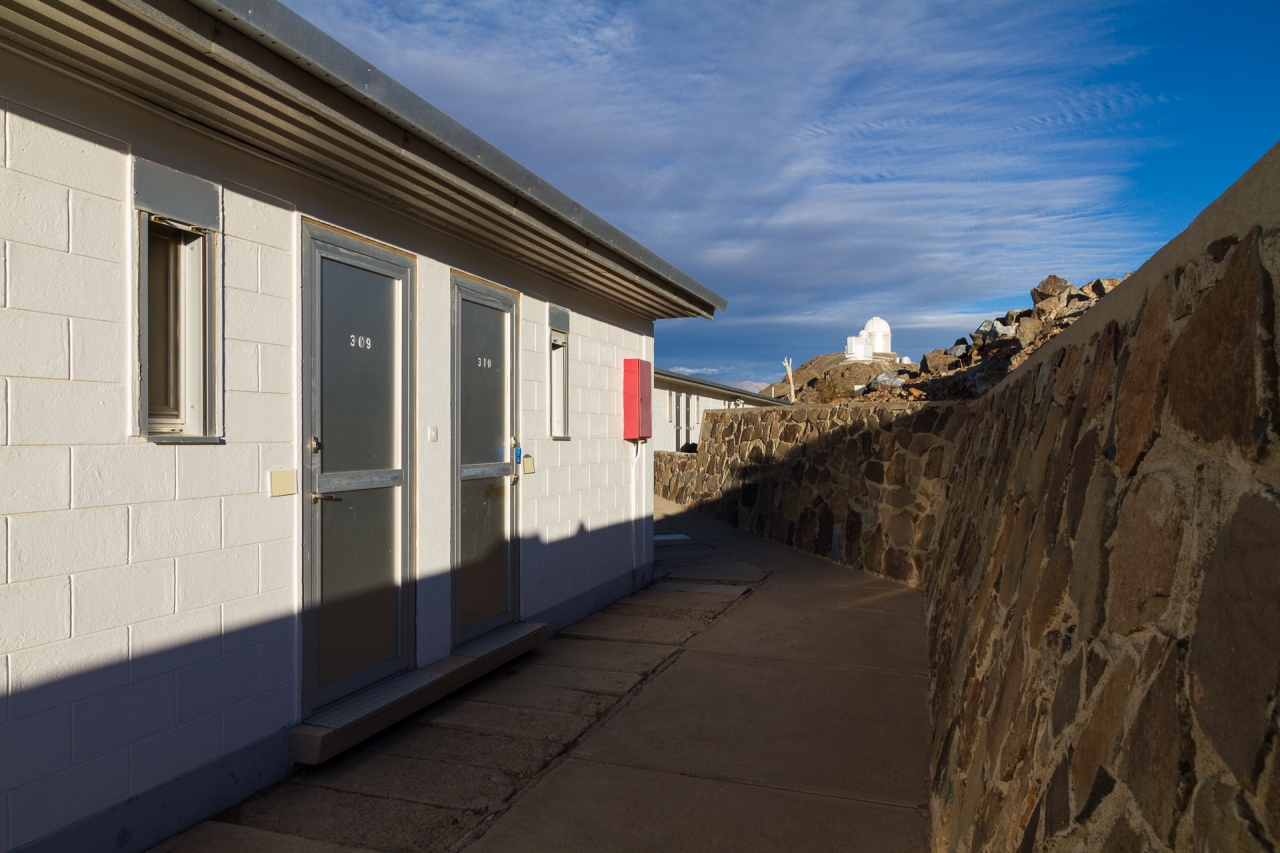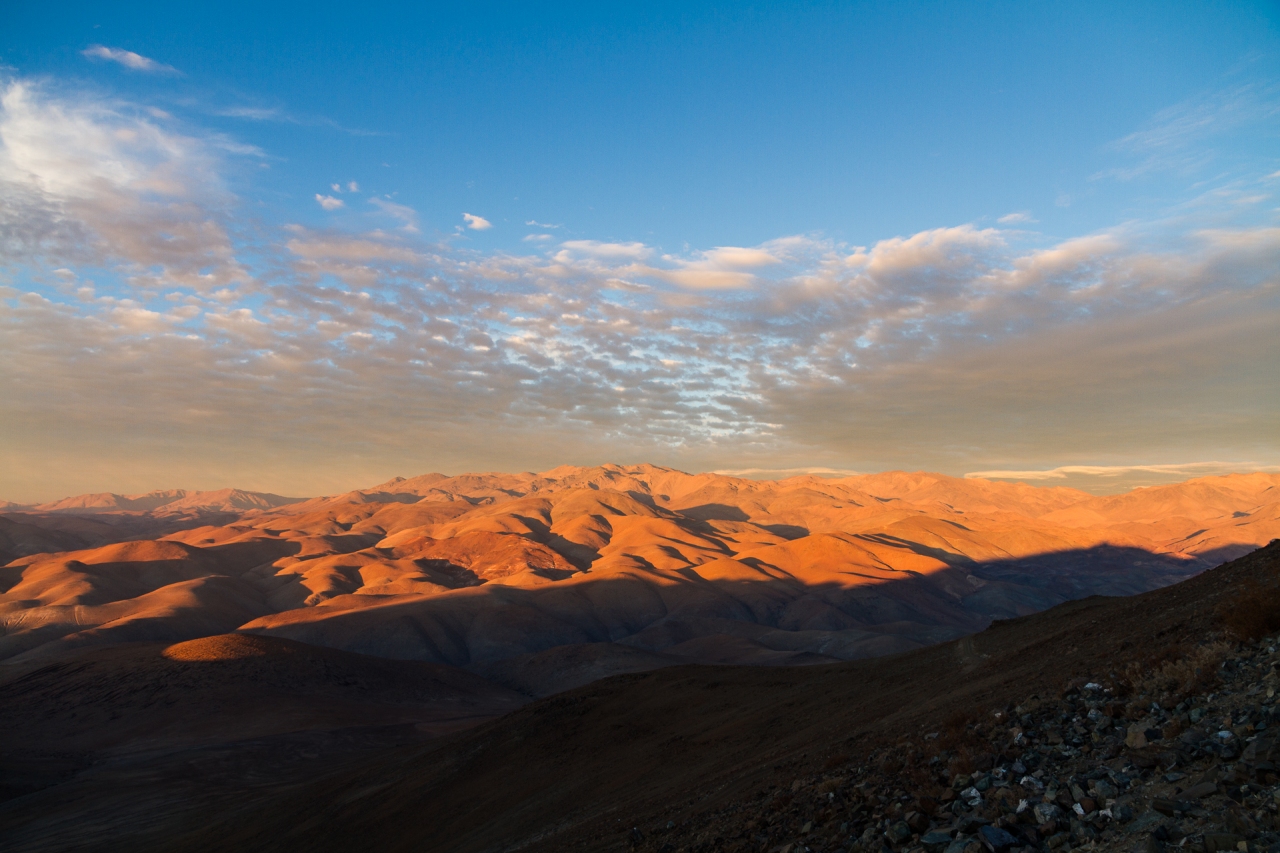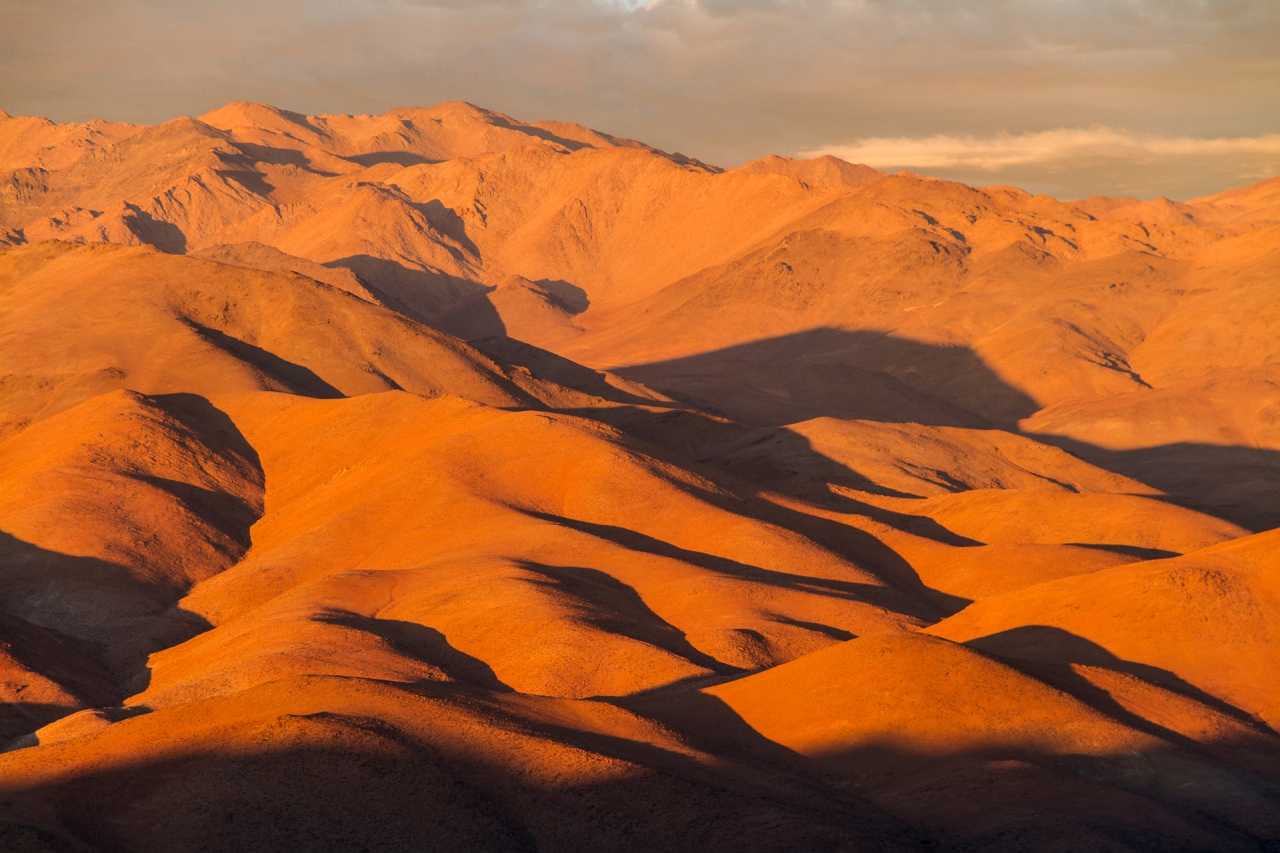I am officially done with the observing on La Silla. It was a nice experience, but 17 days in the night rhythm – working, or at least being awake during the night, and sleeping during the day – is really exhausting, so I am happy to go home now. At this moment I am staying at the ESO Guest House, with still two hours to go before I need to leave to the airport. I am already in the process of switching back to European time, which of course means that I slept miserably, and I was awake at completely unreasonable hours during the night… In total I managed to sleep something like 4 hours during the day before leaving La Silla, and another 4 hours during the night, so it is actually better than it feels. If everything goes according to the plan, then I should be home in 24 hours from now. As a good bye from Chile, here are three pictures from last week showing some nice lenticular clouds above the Andes.
Tag Archives: la silla
Scenes from La Silla
I am halfway through my observing run here at La Silla (7 nights done, 7 nights to go), and I have a few nice pictures to share, and maybe a few things to tell about life up here. First of all, the La Silla Observatory was the European Southern Observatory’s first large site – operations started here in the 1960s.
From the website of ESO: ” The La Silla Observatory is located at the outskirts of the Chilean Atacama Desert, 600 km north of Santiago de Chile and at an altitude of 2400 metres. Here, ESO operates two of the most productive 4-metre class telescopes in the world. The 3.58-metre New Technology Telescope (NTT) broke new ground for telescope engineering and design and was the first in the world to have a computer-controlled main mirror (active optics), a technology developed at ESO and now applied to most of the world’s current large telescopes. The ESO 3.6-metre telescope is now home to the world’s foremost extrasolar planet hunter: High Accuracy Radial velocity Planet Searcher (HARPS), a spectrograph with unrivalled precision. The infrastructure of La Silla is also used by many of the ESO Member States for targeted projects such as the Swiss 1.2-metre Leonhard Euler Telescope [I am here], the Rapid Eye Mount telescope (REM) and the TAROT Telescope gamma-ray burst chaser, as well as more common user facilities such as the MPG/ESO 2.2-metre and the Danish 1.54-metre telescopes.”
How does my typical day (or – actually – night) look like? I get up at 15:15, get a shower, then I walk 1 km to the telescope (luckily not so much uphills, so it’s really nothing compared to the walk on La Palma), and start the calibrations (technical preparation of the telescope and the instruments) at around 16:00. I also have to make the schedule for the night: I assemble a list of targets from a few different ongoing observing programs, according to the requests I got beforehand. Then at 17:45-18:00 I walk back down to have dinner. (The food is similar to what you get on La Palma, a bit greasy but fine, lots of meat, fish, pasta, and potatoes. Plus there is always tons of fruits, which I always really missed while observing on the Canaries.) I have to eat a bit quicker than usual, since I need to be back at the telescope by 18:50. When the Sun reaches -12° below the horizon, I start the observations. From here, everything is pretty automatic, but there are many things which need my supervision. E.g., if the weather changes, I have to adapt the settings to ensure that the observations remain useful (in terms of signal-to-noise). The observations can continue until 6:20, when the nautical twilight starts. After stopping with the science program, I might still need to make some calibrations, and shut down the telescope. Then I walk down and have breakfast. By the time I go to sleep it is usually 7:30-8:00…
The autumn weather is all right up here, now it is around 12°C during the day, and 8°C during the night, but a week ago it was 18°C – at night. It can get pretty windy sometimes, yesterday I woke up several times because the wind made so much noise. (We are talking about a 20 m/s average windspeed here.) Since the beginning of my observing run, I had 5 perfectly clear nights, and 2 nights with some partial cloud coverage, but there was not a single night when I could not work at all. The scenery is still beautiful, the colours of the mountains seem to be different every day, thus the view keeps changing continuously. I am trying to limit myself and not take – or at least not publish – hundreds of similar pictures, but it is very difficult to make a good selection. The past two evenings the sky around sunset was really mind-blowing, especially while I was walking down for dinner, without any of the two cameras I have here with me. Typical… Yesterday was especially amazing, with colours from yellow to deep purple all over the sky above the domes. I was really mad at myself for not taking my camera. But since I have to walk back after dinner, already carrying my food for the night (a few slices of cake, one or two bananas, and some water), I am not so willing to take a camera with me as extra weight. 1st world problems…
The only real problem I have (after they finally turned on the heating in the bedrooms, because sleeping in long pants and a sweater was not so great during the first two nights) is the lack of sports. I actually planned to do some running, I even brought my full running gear with me, but I simply have no time to do it. If I want to go for a half-hour run, then I need to get up 45 minutes earlier, which is really not reasonable, when the most sleep I got the past week was 7h 25m. I can only hope that when I am back in Belgium, I will still know how to ride my bike… And especially that I will have the power to do it. We will see :) I am getting a bit homesick and tired, but it is nice to work here.
The Magellanic Clouds over La Silla
The Milky Way, our home galaxy is not alone in the Local Group of galaxies in the Universe, there are several smaller or larger satellite galaxies orbiting around it. Two of these are visible to the unaided eye, the Large and Small Magellanic Clouds (the LMC and the SMC). These are both irregular galaxies, both only visible from the Southern hemisphere.
First, here is a wide angle view of the sky towards the southern celestial pole. (Canon EOS 7D + Canon EF-S 15-85mm f/3.5-5.6 IS USM lens @ 15mm, f/3.5, ISO1600, 69s.)
Then from a few hours later, here is another shot showing the Magellanic Clouds next to the dome of the ESO 3.6 metre Telescope. The strong green and orange glow above the horizon is airglow. (FUJIFILM X100S, 23 mm, f/2, ISO 3200, 15s.)
The following two shots are both made from 10 individual images by calculating their average to achieve a better signal-to-noise ratio (a.k.a. to have nicer images with low noise). Each individual frame was taken with a Canon EOS 7D + Canon EF 50mm f/1.4 USM lens, f/2, ISO1600, 20s.
The Milky Way over La Silla
One of the nice things about the Southern sky is the ability to see the brightest, central parts of our own galaxy – the Milky Way – spreading across the midnight sky, from horizon to horizon, through the zenith. You can see four photos below, each stacked together from several individual exposures. (Click on the images for the – very much larger – originals!)
First, here is the brightest part of the Milky Way, looking towards the centre of the galaxy (and the Scutum, Sagittarius, and Scorpius constellations). The green glow towards the bottom is airglow near the horizon. (From 27 images with a Canon EOS 7D + Canon EF 50mm f/1.4 USM lens, f/2, ISO1600, 10s.)
Here is a zoom-in on the galactic centre (average of 20 individual exposures taken with a Canon EOS 7D + Canon EF 50mm f/1.4 USM lens, f/2.8, ISO1600, 10s).
Then here is the southern part of the Milky Way which is not visible from the Northern hemisphere, looking towards the Centaurus, Crux, and Carina constellations. (From 10 images with a Canon EOS 7D + Canon EF 50mm f/1.4 USM lens, f/2, ISO1600, 10s.)
And at last, but definitely not least, here is the Milky Way from horizon to horizon (from Cygnus to Carina), with a bit less post processing. Do yourself a favour, and really click for the large version! (From 21 images with a FUJIFILM X100S, 23 mm, f/2, ISO 3200, 15s)
And remember, these images are just for fun, my observing run only starts tomorrow, and while it will produce a lot of interesting data, it will not result in pretty images like these!
La Silla – before observing
If you love rocky landscapes, mountains, and deserts, then La Silla is for you. I am only at the beginning of my stay here, but I have seen so many beautiful things, that it was really difficult to make a selection from all the pictures I took. We had a small hike after lunch to a nearby place where several petroglyphs (rock engravings) can be seen on boulders lying around the slopes of the mountain. It was still almost fully overcast when we left, but by the time we had to turn back, the sky cleared up and the desert showed its colours. Here are the best shots from the afternoon, tomorrow I will come back with some pictures of the Southern sky! Then as the day (night) after tomorrow my observing run starts, I might have to spend some time on actual work too ;)

